Welcome to E Oldroyd & Sons, the Home of Yorkshire Forced Rhubarb.
E. Oldroyd & Sons Ltd , are producers and packers of high-quality Yorkshire forced rhubarb and fruit . The family has 5 generations of experience in Yorkshire forced rhubarb production and is regarded as leaders in their field, being highly skilled in the production of this highly specialist crop, which is part of the local heritage. Oldroyd’s farm first became a tourist attraction in 1997, initially designed for group bookings. They became so popular that eventually a whole Festival was based around the tours so that individuals and families can also see the forced rhubarb growing in the dark being harvested by candlelight, and learn the incredible history associated with this plant, and the health benefits forced rhubarb and field rhubarb can bring to us all.
Visits can be arranged throughout the season January to March and at Wakefield’s Rhubarb Festival to experience this popular award-winning tour,
The company has a high media profile, being one of the country’s largest producers of Yorkshire forced rhubarb as well as field rhubarb. Many celebrity chefs have made visits to the Oldroyd’ s due to the resurgence in popularity of this traditional crop. Janet Oldroyd Hulme has become affectionally known by the media as the ‘High Priestess of Rhubarb’ and the company is listed as a Rick Stein Food Hero Producer.

Oldroyd’s Yorkshire Forced Rhubarb Triangle Experience Tours will hopefully commence January 2025, bookings taken in November 2024 for season 2025
About your visit:.
Although the whole visit takes place indoors, this is a working farm, and warm outdoor clothing and sturdy foot-ware are recommended. Experience the amazing secret world of the rhubarb triangle ! It’s time for you to see what all the fuss is about. The unbelievable sight of rhubarb growing INDOORS in the dark, out of season, using only the plants’ natural requirements for growth. Listen – you might just hear it growing!
Did you know that this plant produced the most wondrous drug of the time since 2700 BC? LEARN THE BENEFITS THAT EATING RHUBARB CAN GIVE TO YOU NOW!
Is the massive interest in rhubarb due to simply another food fashion trend? Have you heard about these extremely popular tours of the forcing sheds, and always wanted to come? Have you tried in the past and we were always fully booked? Visit this full-working farm, run by a family who has 5 generations of experience.
TRADITIONALLY GROWN YORKSHIRE INDOOR RHUBARB – A National Treasure, The pride of Great Britain. THIS COULD BE YOUR GROUP’S MOST INTERESTING VISIT OF THE YEAR, VISITS BY PRE-BOOKED.
Appointment Only:
The visit starts in our lecture room, where you will be seated for approximately 1 hour
whilst we discuss the ancient history of rhubarb, how, and why it was used as a medicine. You will be taken back in time to 2700BC to trace rhubarb’s interesting ancient history. We explain how the forcing process was discovered and how we came to eat rhubarb .
The benefits of eating rhubarb have for the body today. You will then enter “The Secret World of the Rhubarb Triangle” and view a crop growing in the dark sheds. We discuss today’s growing techniques and explain how the process works . Whilst you are in the sheds take the opportunity to stand quietly and listen to catch the sound of rhubarb growing.
You will be stood in the shed for approx. 30 minutes. A limited number of chairs can be taken in for any infirm visitors who cannot stand for long periods. The sheds are also accessible for limited wheelchair needs
You may just be spellbound by the sight and stare speechless at the spectacle before you like so many visitors do, who then return year after year for just one more look and listen once more to the huge amount of information there is to learn.
At the end of the tour, you will have the opportunity to purchase fresh forced Yorkshire rhubarb, from small amounts to full boxes all at low farm prices so it’s your chance to stock up your freezer. Our award-winning strains of roots will be available to enable you to grow your own high-quality rhubarb at home, also preserves made from our own forced rhubarb, plus any other products we have available at the time.
Your visit will take around 1 and 3/4 – 2 hours.
Coaches can pull right into the farmyard area to allow visitors to disembark should it be raining.
Please note:
We take bookings for numbers between 1-80 persons per visit, groups are usually 30 plus in number, but we can take less and add you on to another group.
Bookings are classified as either: Individuals, families, or groups under 30 in number. Charge per person £7.50
GROUPS OF 30 – 80 persons
We take bookings for numbers between 1 – 90 persons per visit If you have 30 plus in your group you can select, if possible, a date and time for your visit. If you have less than 80 persons, we can open the visit up to others to fill the time slot. Where payment is made as a single payment plus deposit you will receive the discounted rate of £7 per person.
Group Tour Booking Procedure:
Once you know the date you require, telephone 0113-2822245 to provisionally reserve your date. Once you know you have sufficient group members send a non-returnable £50 deposit which will secure that date for you and confirm your booking. You will then be sent directions to the farm at Lofthouse Wakefield, (the center of our forcing operation) which is halfway between Leeds and Wakefield close to the M62 and M1.
An invoice will be issued upon request for accounting purposes should you require one. Payment by bank transfer is preferred, details are available upon request. We look forward to seeing you. It will be an experience you will never forget.
Wherever possible all correspondence will be made by e-mail. We will e-mail maps; tickets are not required. Your booking reference will be required for admission. Email [email protected]
Public Tours
Individuals, families & small groups (under 30) booking procedure:.
You can book a visit outside of the Festival by joining another tour where their numbers are below 80 (a full tour). Bookings and payment can be now done online to ensure you book the date and time you want. You will receive your confirmation and directions via email.
Individuals and family groups can also book for festival dates or at other times as listed in the availability. Tours can be arranged throughout the season just look at our availability for a suitable date, cannot see a date suitable for your small group then contact us to discuss.
Bookings/Information. Telephone 0113-282 2245 PUBLIC TOURS CAN BE ARRANGED FROM JANUARY – MARCH. PLACES ARE LIMITED, SO RESERVE A DATE NOW!
TOUR PRICES ADULTS £7.50 CHILDREN 5 – 13yrs £5.00 SORRY NO CHILDREN UNDER 5 All prices include V.A.T.
Group Tours
Groups of 30 and over.
Bookings and payment can be now done online to ensure you book the days you want, you will receive your confirmation and tickets via email. You can still book by telephone or via post but payment must be made in full TWO weeks prior to your tour. Payment can be made by cheque or bank transfer only ( details are given upon request).
Do you have a group of 30 – 80 persons who wish to reserve a date for a private visit? A deposit of £50 will reserve your group date. Groups less than 30 must check availability.
The visit starts at our reception you will be served with complimentary Tea / Coffee and Biscuits on arrival then a talk by Janet Oldroyd Hulme known as The High Priestess of Rhubarb.
Experience the amazing secret world of the rhubarb triangle! It’s time for you to see what all the fuss is about.
The unbelievable sight of rhubarb growing INDOORS in the dark, out of season, using only the plants’ natural requirements for growth. Listen – you might just hear it growing!
Did you know that this plant produced the most wondrous drug of the time since 2700 BC?
LEARN THE BENEFITS THAT EATING RHUBARB CAN GIVE TO YOU NOW!
Is the massive interest in rhubarb due to simply another food fashion trend?
Have you heard about these extremely popular tours of the forcing sheds, and always wanted to come? Have you tried in the past and we were always fully booked?
Visit this full-working farm, run by a family who has 5 generations of experience.
TRADITIONALLY GROWN YORKSHIRE FORCED RHUBARB – A National Treasure, The pride of Great Britain.
Please make your visit selection from the availability, finally checking with the farm on (0113-2822245) for this very popular treat. Once availability is confirmed and provisionally booked with our main office, post your cheque payment, and completed the booking form. Upon receipt of your payment your tickets, and sitemap location are dispatched out to you confirming your visit.
THIS COULD BE YOUR GROUP’S MOST INTERESTING VISIT OF THE YEAR, VISITS BY PRE-BOOKED APPOINTMENT ONLY
The History of the Oldroyds & the growth of Yorkshire Rhubarb.
Originally the Oldroyd family were fruit growers in the Wisbech area. Their close connections with the rhubarb industry began with John Richard Oldroyd, who although the son of a prosperous Cambridgeshire farmer, he decided to branch out on his own, and became a very successful market gardener and businessman; unfortunately, during the depression, he lost everything and decided to move to Wakefield to be close to his daughter Martha Neal who owned a fruit and vegetable shop in Northgate Wakefield.
John found a farm to rent at Lofthouse Wakefield and began growing fruit and vegetables at Pymont Farm. He became friends with a local rhubarb grower and in exchange for passing on his skills at growing strawberries, John was taught the secrets of forcing rhubarb. As John’s reputation for quality produce grew, his eldest son Ernest came to Yorkshire to assist his father in 1933.
The King of Yorkshire Forced Rhubarb.
Ken was a much admired and respected local figure, referred to as The Rhubarb King due to the work he did to save the Yorkshire Forced Rhubarb industry.
The industry declined to such an extent following the Second World war that when railroad deliveries of rhubarb ceased it became difficult for growers to market and transport produce in their individual small quantities. Ken was instrumental in forming the Yorkshire Rhubarb Growers Association in 1967initially from an office at his Carlton Farm, thus enabling growers to market as a group.
He became an advisor at Stockbridge House Horticultural Research Station and was re-elected for eleven years up until re-organisation ended its rhubarb research in 1992. For his services to the rhubarb industry, he was awarded the Northern Horticultural Societies’ highest accolade ‘The Harlow Carr Medal’ in 1995.
His selfless devotion to the industry made him one of the Horticultural industries’ most respected and admired figures of his time.
Ken finally stopped working the land he so loved when in 2002 his driving licence was revoked for failing eyesight. Work was a pleasure; he was lost without it, but never lost interest.
He was determined to expand when others left the industry, selecting certain farms he regarded as the perfect soils for his needs when they came up for auction.
Ken left a great legacy behind, a rhubarb industry that has survived, thanks in part to his determination and dedicated. Today the company he worked so hard to build, produces yearly around 1,000 tons of rhubarb for supermarkets, wholesale markets, and commercial users, and is run by his daughter Janet and Grandsons Lindsay and James.
Ken was well known in local cricket circles being a member of the Leeds League Management Committee and President of his local team, Carlton Cricket Club.
Note from Janet Oldroyd Hulme
I am proud to be Ken’s daughter and promised him, to continue the work that he started, the battle to save the crop, and local heritage industry that he so loved, Yorkshire Forced Rhubarb.
I dedicate this website to all growers past and present and their devoted staff. All horticulturalists over the years who have devoted themselves to the improvement of this plant and development of the industry, in particular, the late Mr F G Smith, Mr J D Whitwell , Mr M R Bradley. The celebrity chefs and journalists who have helped promote the crop and develop new recipes, but most of all to my father, whose love for, and faith in, both the crop and the industry helped to ensure continued production of forced rhubarb for years to come.
Now available, Premium Forced Rhubarb is now available until 11th April 2024
Class 2, thin sticks, forced rhubarb is now available until 18th april 2024, outdoor-grown rhubarb will be available from the 16th april until 13th june 2024, tours will hopefully commence in january 2025, with bookings taken in november 2024 for the season 2025.
With delays with the tourist facility’s new build, which is out of our control, so unfortunately, tours will not take place this season. Hopefully, we will be back up and running in 2025.
Our stand at Wakefield Festival market by the cathedral will be there as usual for rhubarb supplies. You can pre-order full boxes which can then be collected at the stand if larger quantities are required. Locals can of course collect rhubarb supplies at the Hopefield Farm site at Rothwell.
Apologies for this delay.

The story of the Yorkshire Rhubarb Triangle
May 5, 2021 | Uncategorized | 0 comments

It’s Rhubarb season again!
Once again, it’s that time of year when Rhubarb features on the menu again. But its not just rhubarb crumbles or pies, Chefs are now using rhubarb in many more innovative ways – rhubarb cheesecakes, rhubarb scones, as accompaniment to pork and even rhubarb gin!
It started to become a popular ingredient in the late eighteenth century in England and has remained a British favourite ever since – but did you know that most of the rhubarb eaten in Britain is actually grown in Yorkshire?
A 9 square mile area of West Yorkshire has now become known as The Rhubarb Triangle – the three corners of the triangle roughly equate to Leeds, Bradford and Wakefield. Here rhubarb is grown in special sheds in a process known as “Forcing”.
The process of forcing of rhubarb was discovered in Chelsea in 1817, when some roots were covered with manure over winter and it was noticed new tender shoots appearing which were tastier than anything grown before. This lead to the Whitcliffe family of Leeds starting the first mass market commercially growing of rhubarb in 1877, erecting special sheds to grow rhubarb out of season.
West Yorkshire has ideal nitrogen rich soils for the growing of rhubarb root systems, and after the success of the Whitcliffe family business at one point Yorkshire had over 200 rhubarb growers.
The success of the rhubarb industry in Yorkshire meant a whole transport industry set up around it – with special trains leaving nightly to ship large valuable cargo’s of rhubarb down to the old Covent Garden Market.
As Rhubarb originates from Siberia it needs cold weather to grow and the area where the Rhubarb Triangle is based on the edge of the Pennines is in what is known as a “frost pocket”, again which helps make the area ideal for rhubarb cultivation.
Rhubarb is still started off outside, but at two years old it is brought into the forcing sheds and left in the dark. This encourages tall, strong, straight stems with smaller leaves (which is good as their leaves are toxic).
The rhubarb in the potting sheds is actually grown in the dark and harvesting is done candlelight. Having been lucky enough to have visited one of these forced rhubarb operations whilst training as a guide – it is quite a surreal experience, as you can actually hear the squeak of the rhubarb growing!
There was a dip in the popularity of rhubarb during the second world war when sugar was rationed an the sharp taste of rhubarb without sugar meant it fell off the menu for many.
There are not as many mass producers of rhubarb in West Yorkshire as there used to be, and that can be put down to the overseas imports of new tropical fruits from overseas. But it is still a large industry for the area and the childhood nostalgia of rhubarb crumble and lumpy custard as well as celebrity chefs creating new innovative recipe’s means the Yorkshire Rhubarb Triangle remains firmly on Yorkshire’s food map. The forcing sheds even have a small tourism industry centred around them and every year Wakefield hosts a popular Rhubarb Festival.
This article was written by Society member Tim Barber from Real Yorkshire Tours – there are more articles on Yorkshire to be found on his blog HERE .
Recent Posts
- The 1st April 2024 Yorkshire Declaration in full
- Why the Yorkshire Declaration made at The Eye of York matters
- Archbishop of York appointed Vice President of The Yorkshire Society
- The Yorkshire Society is proud to sign the Armed Forces Covenant
- Chadwick Lawrence Cohost Equality and Diversity Seminar with Leeds Rhinos
Pin It on Pinterest

- Northern Ireland
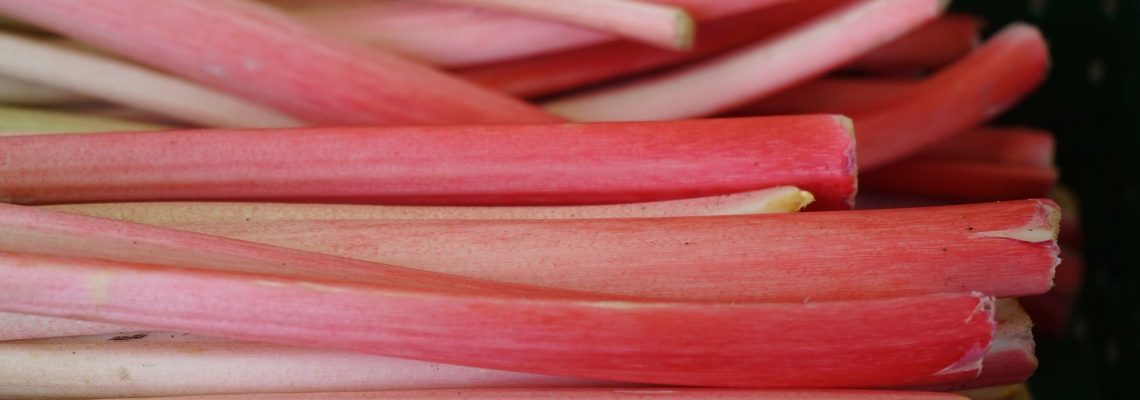
Rhubarb Across Britain
Rhubarb grows naturally across the British countryside however the Rhubarb Triangle is the country’s most famous producer of forced Rhubarb.
Delicious and bursting with flavour rhubarb is perfect for stewing making crumbles and pies as well as preserves and jams.
The Rhubarb Triangle
The Rhubarb Triangle is in West Yorkshire , between Wakefield, Morley and Rothwell. The ideal combination of conditions in the area have contributed to its success and it has been an important part of the local economy for over 150 years.
Yorkshire Forced Rhubarb has Protected Designation of Origin (PDO) status.
Although originally not native to Britain, by the 1840s local markets were supplying rhubarb around the country. Demand for Rhubarb grew, local trade boomed and producers started to cultivate rhubarb on a large scale. By the 1870’s special trains known as the “rhubarb express” delivered fresh produce to London every night during the harvesting season months, running until the early 1960s.
Wakefield Rhubarb Festival
Each year, since 2007, the Rhubarb Festival is held in Wakefield, the ‘capital city of the rhubarb triangle’, which attracts visitors from around the country. The festival celebrates the industry and hosts cooking demonstrations and tours to the famous forcing sheds. For more details visit Rhubarb Festival on Facebook
Inside the Rhubarb Sheds
Watch this great video from Artisan Films. David Westwood came from a family steeped in Rhubarb growing — stretching back to the 1800′s. Still very much a family business the 500-acre farm.
The farm is situated right in the middle of Yorkshires famous ‘Rhubarb Triangle’, and this story begins at the door of the mysterious and ancient Rhubarb sheds.
The Wakefield Museum
To learn more take a visit to the Wakefield Museum , where you can hear forced rhubarb growing (it makes an eerie creaking and popping sound!), and see rhubarb-related items from the collection.
Varieties of Rhubarb
Varieties of rhubarb include Irish Giant, Valentine, Glaskins Perpetual , Victoria , Timperely Early, The Sutton. Forced Rhubarb is harvested each year in late December to March. Field grown, from April to September.
Rhubarb Tours
E.Oldroyd & Sons Ltd. The family has 5 generations of experience in forced rhubarb production and each year tourists from far and wide flock to their farm at Carlton to see the rhubarb growing in the dark being harvested by candlelight. http://www.yorkshirerhubarb.co.uk
BRITISH PRODUCTS
British produce.
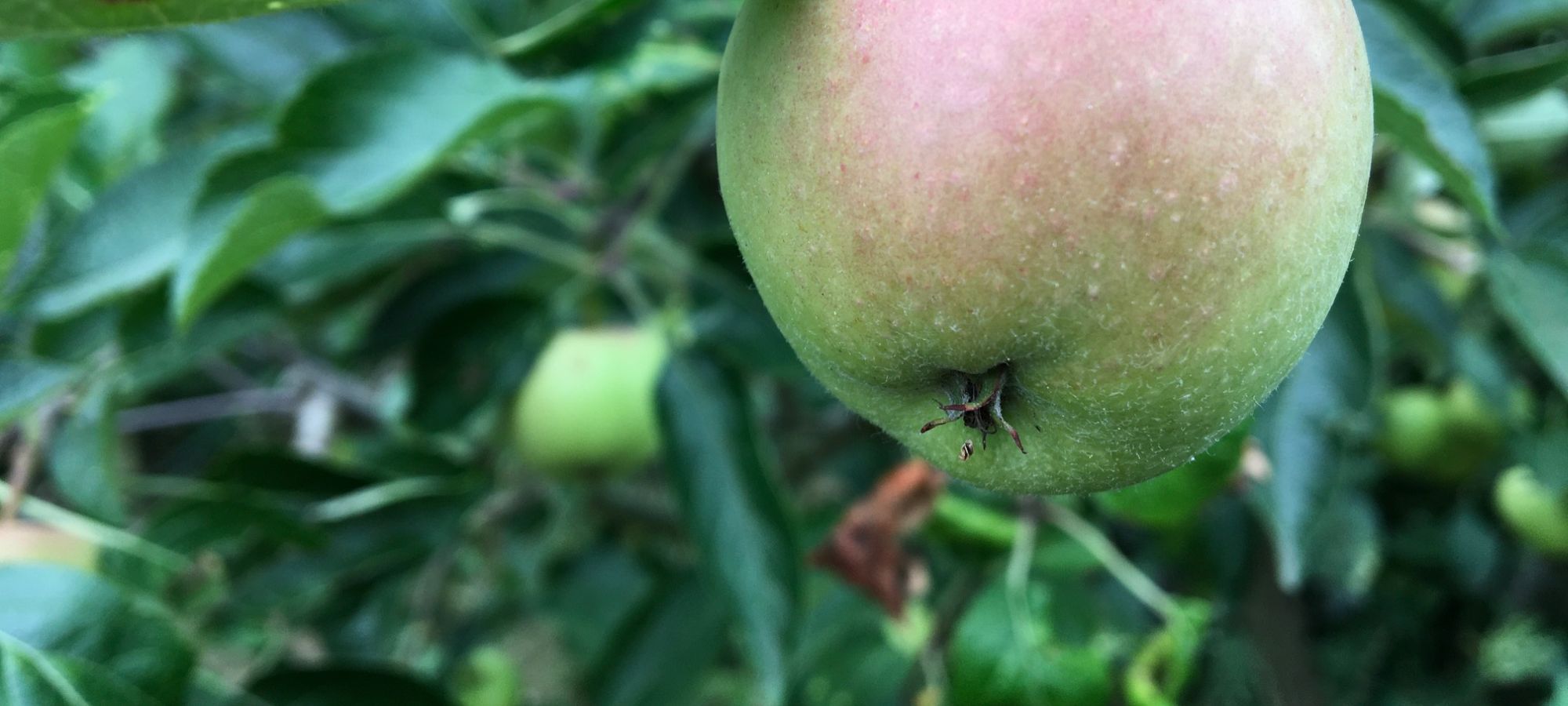
English Apples
With names of local varieties, including Dumelow’s Seedling, Cornish Aromatic and Lord Lambourne to the Worcester Pearmain, Pig’s Nose Pippin and Dr Harvey – There are lots to try.
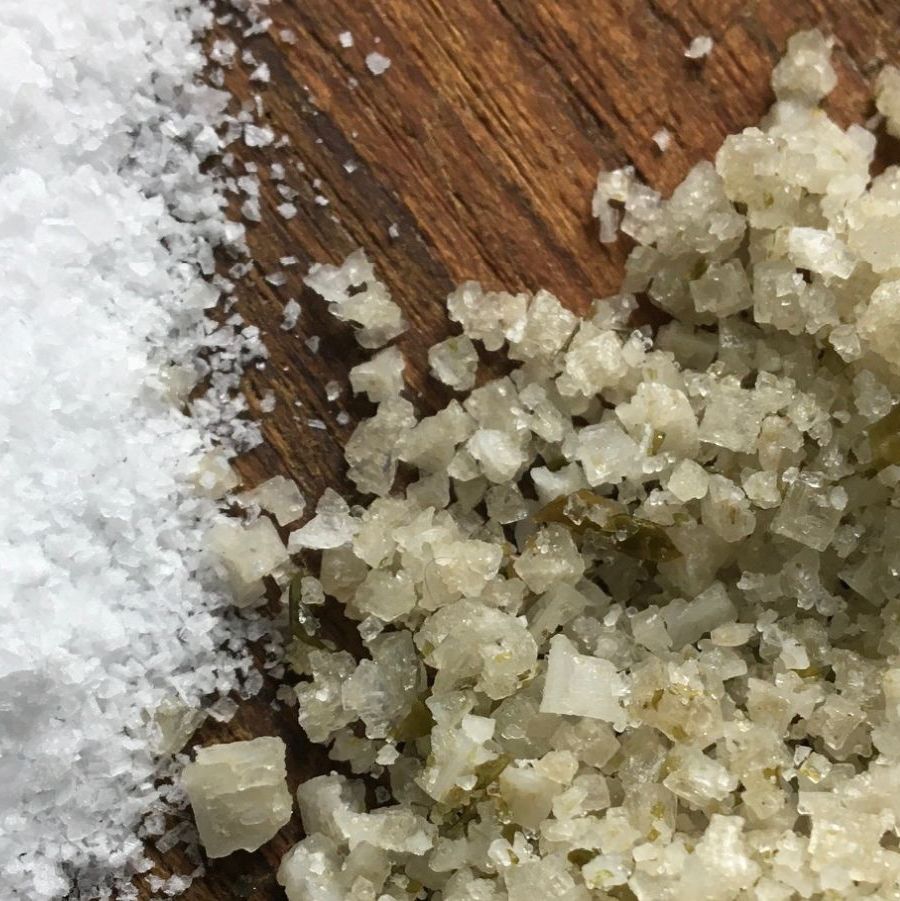
I love you like salt. With a great choice of British salt brands out there, you can find your favourite. Discover salt producers around the country reviving traditional methods and provenance.
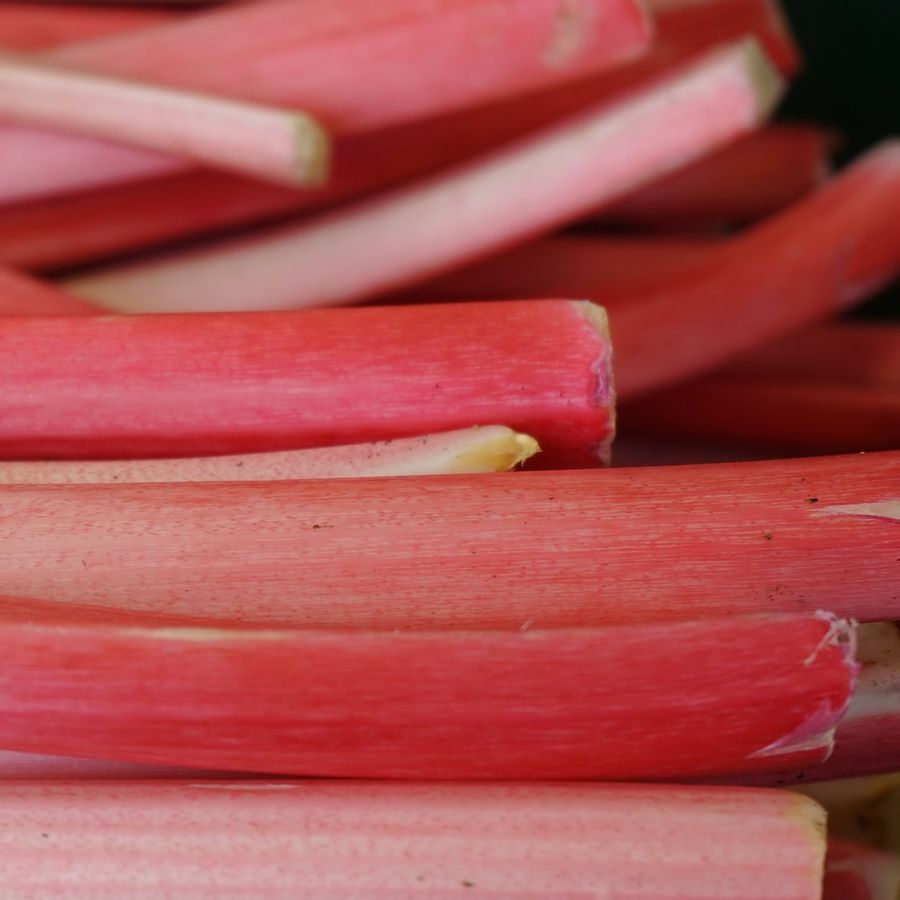
Yorkshire Rhubarb
Delicious and bursting with flavour. Rhubarb grows naturally across the British countryside however the Rhubarb Triangle is the country’s most famous producer of forced Rhubarb.
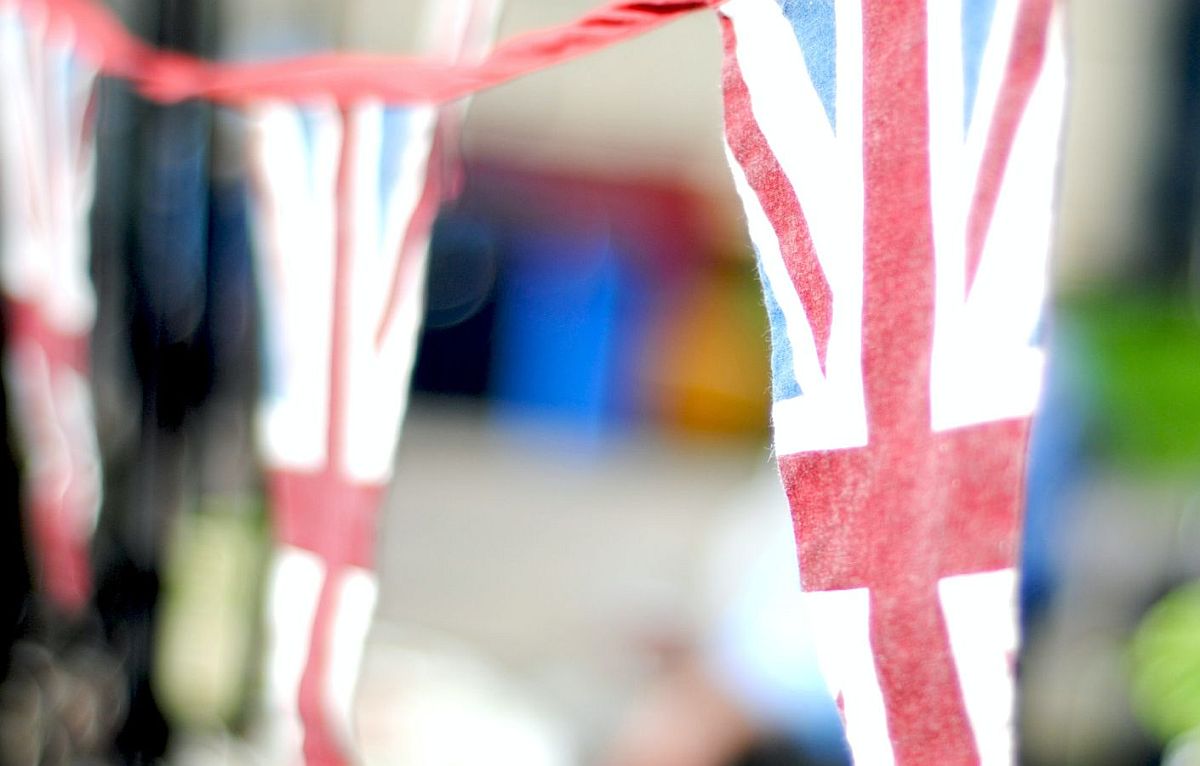
Traditional Celebrations
A guide to traditional British holidays and festivals throughout the year. Celebrate age old customs and traditions. with your friends and family.
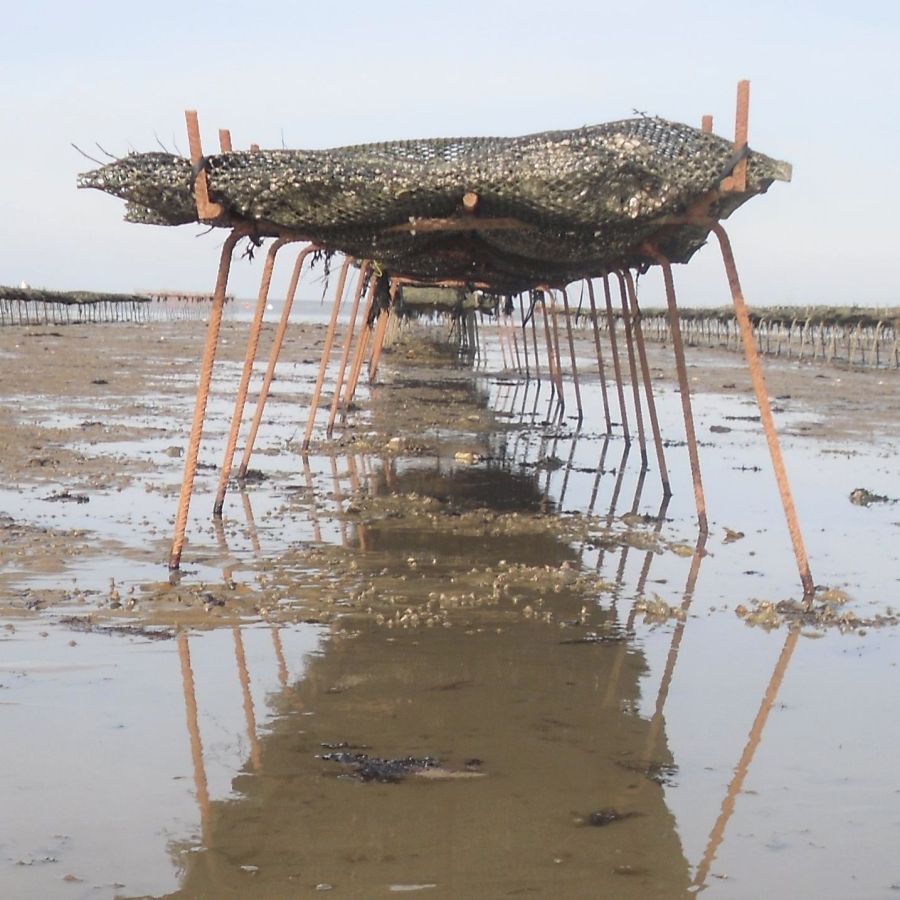
Whitstable Oysters
The charming seaside town of Whitstable, on the Kent coast has been famous for it’s oysters for centuries. Oysters are available all year, but best enjoyed when the weather is colder.
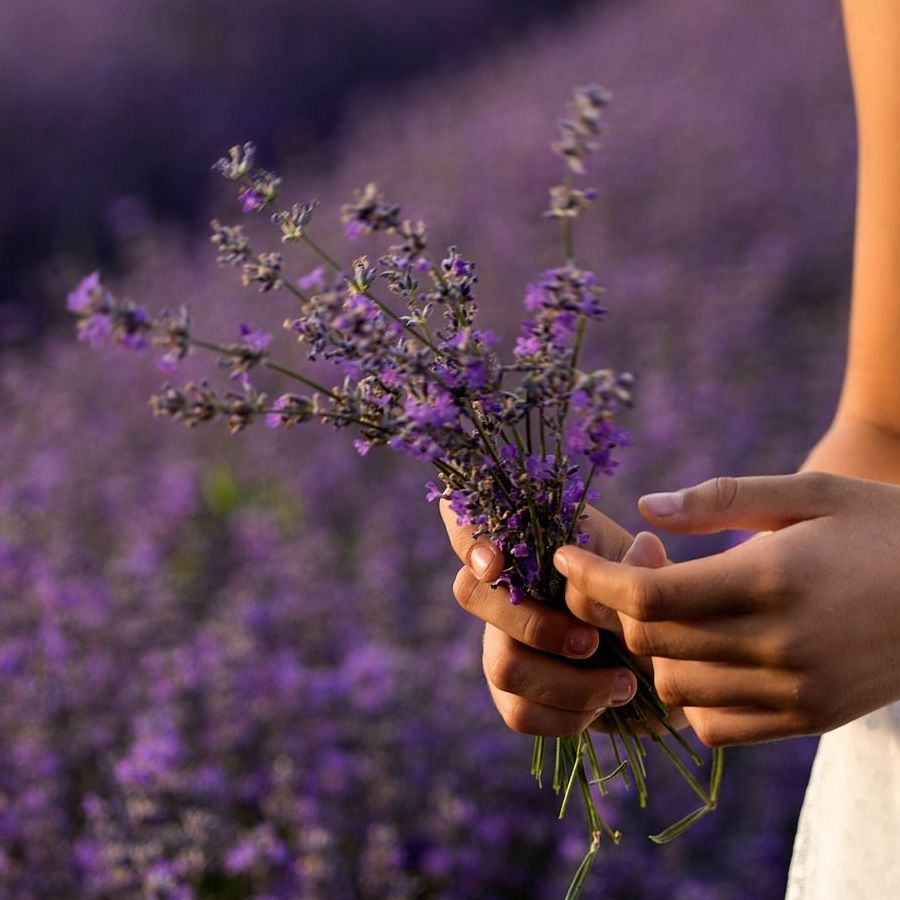
English Lavender
Fragrant and colourful, lavender is a wonderful addition to any garden as well as having beneficial properties and culinary uses. This versatile plant is used in perfumes, oils even in cooking.
Share this page
- Subscribe now
- Digital Edition

The Rhubarb Triangle: growing one of Yorkshire’s finest exports
- February 8, 2023
Jeremy Hobson investigates the Rhubarb Triangle

Forced rhubarb
Where is rhubarb grown in the UK?
Much of it is Yorkshire rhubarb from what is known as ‘The Rhubarb Triangle’, an area between Wakefield, Leeds and Bradford. The location of the Rhubarb Triangle is no casual accident; rhubarb thrives in the cold, damp, loamy soil. For commercial marketing purposes, the positioning of the Rhubarb Triangle is perfect. In the days when produce was transported by railway, it was at the confluence of lines that went west to Manchester and Liverpool, east to Hull, north to Scotland (where rhubarb has apparently always been popular) and south to London’s Covent Garden market. Now that transport is by road, motorway intersections perform the same functions. Sadly, where in the days of the railways there were as many as 200 growers within the Rhubarb Triangle, there are probably only a dozen still in existence.
Is rhubarb native to the UK?
The plant originated in Siberia and has been known in parts of Asia for many centuries. Rhubarb was brought into Europe in the 15th century but it was not until the late 1700s that it began to be seen as a food source.
Rheum, the name by which the genus is known under the Linnaean system, is thought by some to be derived from the old french rubarbe.
Others suspect that it may have come from the Greek rheo, which means “to flow” and is presumably a reference to the plant’s laxative properties when ingested. Why the word rhubarb has been used by actors to simulate conversation during a crowd scene on stage, probably has nothing to do with the plant; it’s likely to be a corruption of “Rhu-bar-ba, rhu-bar-ba”, which was used in the theatre during Shakespeare’s time.

Rhubarb has scientifically proven medicinal qualities
Medicinal properties
Rhubarb has been used for medicinal reasons since ancient times. It was first grown in Britain for scientific purposes in the mid 1700s, probably at the Chelsea Physic Gardens and certainly at Edinburgh’s Botanical Gardens. It’s already proven to lower cholesterol, help prevent deep vein thrombosis and stimulate the body’s metabolic rate (read more scientific evidence on rhubarb here ). Its use as a laxative is well known and the subject of many jokes. However, if you want to cleanse your saucepans rather than your internal tracts, look no further than boiling rhubarb stalks in a little water; the resultant acidic mix shines even the dullest of pan interiors in a matter of minutes. Alternatively, it can apparently be made into an organic insecticide against leaf-eating insects. Boil the rhubarb leaves in a few pints of water for 20 minutes, strain the liquid and then add soap flakes. (Find more of The Field’s recipe for rhubarb crumble here. )

Rhubarb is always pulled, never cut
Forcing rhubarb
Rhubarb crowns are covered to prevent light reaching them, which encourages the plans to make early growth – this is known as forcing rhubarb. (Read The Field’s guide to rejuvanating old rhubarb here. )
As a food source, rhubarb has had its ups and downs. In Victorian times, no self-respecting gardener would be without at least a couple of clumps of it in some corner of the vegetable patch. The wealthy would force theirs each spring with specially constructed rhubarb domes, while the ordinary grower found that he could achieve the same effect with the use of old chimney pots, upturned dustbins and galvanised buckets.

Rhubarb forcing pots
Yorkshire Rhubarb Triangle growers
Possibly the best known of these is Janet Oldroyd Hulme, considered by many to be the “High Priestess of Rhubarb “. Although not the family business until 1942, rhubarb was grown by Janet’s grandfather a decade earlier. It is perhaps due to the efforts of Janet’s father Ken that the business is in today’s healthy state. “We never saw Dad when we were young,” says Janet. “He was always out in the fields, cleaning the flues for heating systems in the forcing sheds and meeting people to check out growing areas. He was also involved in setting up the Yorkshire Rhubarb Growers’ Association.”
Rhubarb varieties grow at varying rates, it generally takes three to four weeks to bring the roots on to the point where the delicate stems can be pulled – they are never cut for fear of damaging the parent plant. Grown in the dark to keep the stems blanched and straight, rhubarb is harvested by candlelight by professional growers to avoid strong light which might damage the plant. David Westwood of D Westwood & Son starts his harvest in December, but February is the main cropping season, which lasts for four to six weeks, after which there is a marked deterioration in plant and crop quality. The roots are then rotovated back into the soil.
Rhubarb growing has become a tourist attraction, as is the Rhubarb Triangle. It is, at the right time of year, possible to take a guided tour around the forcing sheds on Janet’s farm. Visitors describe the experience as being “cathartic and calming”, “like being in a flotation chamber”, and, “amazing… if you’re quiet, you can hear the plants growing”.
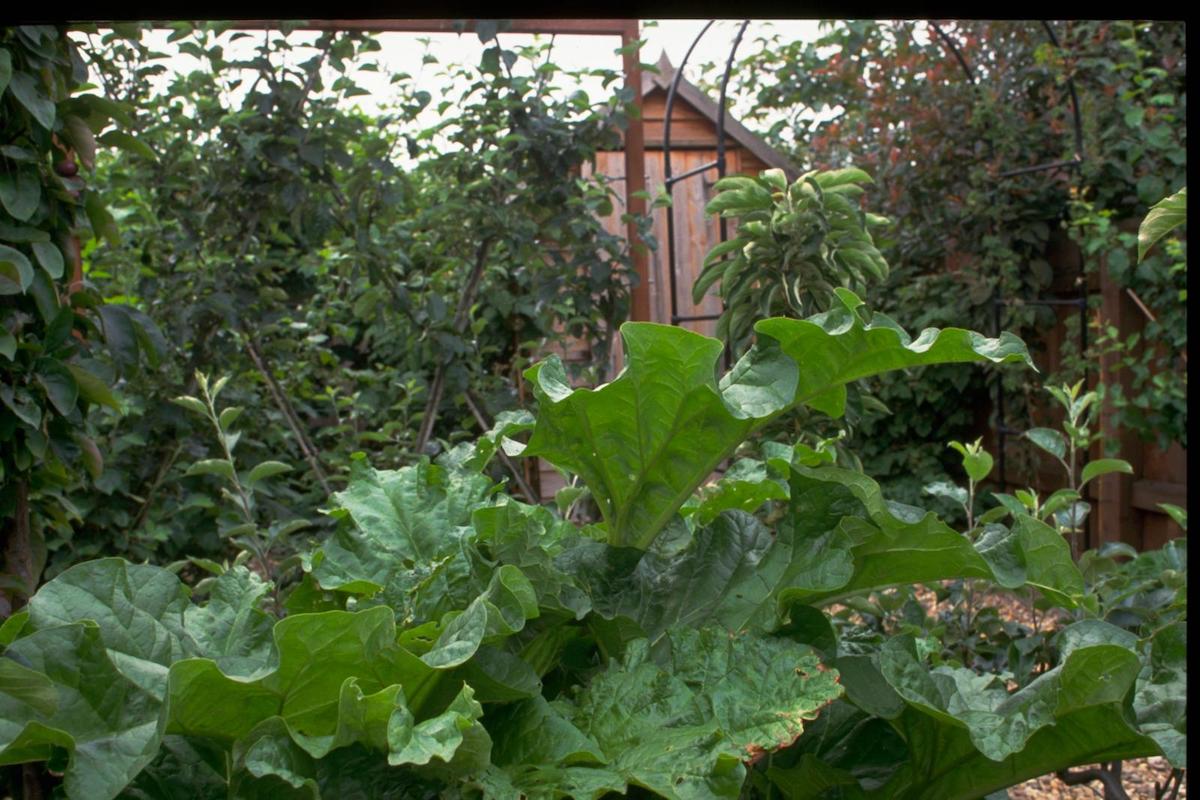
This article was originally published in 2014 and has been updated.
- Apr 18, 2021
Hail the Yorkshire Rhubarb Triangle

It’s that time of year again, when Rhubarb features on the menu again. But its not just rhubarb crumbles or pies, Chefs are now using rhubarb in many more innovative ways – rhubarb cheesecakes, rhubarb scones, as accompaniment to pork and even rhubarb gin!

It started to become a popular ingredient in the late eighteenth century in England and has remained a British favourite ever since – but did you know that most of the rhubarb eaten in Britain is actually grown in Yorkshire?
A 9 square mile area of West Yorkshire has now become known as The Rhubarb Triangle – the three corners of the triangle roughly equate to Leeds, Bradford and Wakefield. Here rhubarb is grown in special sheds in a process known as “Forcing”.
The process of forcing of rhubarb was discovered in Chelsea in 1817, when some roots were covered with manure over winter and it was noticed new tender shoots appearing which were tastier than anything grown before. This lead to the Whitcliffe family of Leeds starting the first mass market commercially growing of rhubarb in 1877, erecting special sheds to grow rhubarb out of season.
West Yorkshire has ideal nitrogen rich soils for the growing of rhubarb root systems, and after the success of the Whitcliffe family business at one point Yorkshire had over 200 rhubarb growers.

The success of the rhubarb industry in Yorkshire meant a whole transport industry set up around it – with special trains leaving nightly to ship large valuable cargo’s of rhubarb down to the old Covent Garden Market.
As Rhubarb originates from Siberia it needs cold weather to grow and the area where the Rhubarb Triangle is based on the edge of the Pennines is in what is known as a “frost pocket”, again which helps make the area ideal for rhubarb cultivation.
Rhubarb is still started off outside, but at two years old it is brought into the forcing sheds and left in the dark. This encourages tall, strong, straight stems with smaller leaves (which is good as their leaves are toxic).

The rhubarb in the potting sheds is actually grown in the dark and harvesting is done candlelight. Having been lucky enough to have visited one of these forced rhubarb operations whilst training as a guide - it is quite a surreal experience, as you can actually hear the squeak of the rhubarb growing!
There was a dip in the popularity of rhubarb during the second world war when sugar was rationed an the sharp taste of rhubarb without sugar meant it fell off the menu for many.

There are not as many mass producers of rhubarb in West Yorkshire as there used to be, and that can be put down to the overseas imports of new tropical fruits from overseas. But it is still a large industry for the area and the childhood nostalgia of rhubarb crumble and lumpy custard as well as celebrity chefs creating new innovative recipe’s means the Yorkshire Rhubarb Triangle remains firmly on Yorkshire’s food map. The forcing sheds even have a small tourism industry centred around them and every year Wakefield hosts a popular Rhubarb Festival.
Recent Posts
Delicious home-made pasta and Calabrese food in the heart of Ilkley
After Fred & Nadiya visited in Remarkable Places to Eat – I needed to try the famous Crab Brioche...
York Minster Refectory – top food in a heritage building

- Testimonials
- Client log in
YORKSHIRE RHUBARB TRIANGLE WEEKEND SPRING

• Guided tour of a Yorkshire Rhubarb Farm
• Free Time to explore the City of Leeds
• York Chocolate Story
• Black Sheep Brewery – Tour & Tasting
To view the full itinerary for this tour, please log-in . If you don’t have an account with us already, please contact us to register.
- Follow us on social media

Copyright © 2020 Ashley & Newey. All rights reserved. New World Hotels Ltd, 31-33 Victoria Road, Darlington, DL1 5SB Company number 2276836, Registered in England


A Rare Breed. Janet Oldroyd Hulme and ‘Yorkshire Forced Rhubarb’
[blog-archive-images]
Climatic changes have impacted the agricultural landscape phenomenally over recent years and is inherent in the growth of forced rhubarb; it was a factor I was unaware of until I found myself wrapped up against the freezing elements, navigating the terrain of a forcing shed. In fact, frost and darkness are the optimum conditions for growth and so this sudden burst of cold weather set across the UK, for the rhubarb at least, is a blessing. The continuation of growth is vital, as forced rhubarb has become so endangered that what once started out as an industry of over 200 growers has now dwindled to just 9. The rhubarb triangle consists of a geographical area spanning Bradford, Leeds and Wakefield in the county of West Yorkshire, England. The term ‘Yorkshire Forced Rhubarb’ was given Protected Designation Origin status by the European Commission in 2010. Many things have determined this to be the optimum area for growth, geographical location to name one of them, the quality of the soil, to name the other. Positioned at the foot of the Pennines, the moisture content of the land is enhanced by the water running down from the surrounding hills and I am here to meet Janet Oldroyd Hulme, the woman at the top of the rhubarb pyramid, to witness the transition from an inherited tradition to a modern-day enterprise.
Following a succession of five generations, Janet’s father believed strongly in the sustainability of the land, by putting back what is taken out of it. Originally a medical scientist, Janet returned to E. Oldroyd and Sons Ltd, to preserve this legacy. Rhubarb, or Rheum rhabarbarum, as it is scientifically known, is by tradition a spring plant native to Siberia, originated not as a food but as a medicine dating all the way back to 2,700 BC. Historically, the roots were transported via the Silk Road from Siberia to China where it was formulated into an herbal remedy. Rhubarb leaves and roots contain Oxalic acid, which by all accounts are poisonous, but in small amounts the powder obtained from the roots were used to treat gut, liver and lung disorders for thousands of years. For this purpose, the medicine obtained from the root was first imported to the UK in the 13 th century, but by the 16 th century as the medicine was so very expensive the first seeds were brought in to produce the roots here. ‘After this time, modern medicine became paramount,’ Janet tells me, ‘and rhubarb as a medicine was forgotten about.’ From here its properties turned to food where it flourished and, rather cost effectively, grew in abundance. Rhubarb was so popular during the War that the Government curbed the price of forced rhubarb to one shilling per pound, so necessary were its health benefits regarded for the population. ‘After the Second World War the story changed,’ Janet tells me. ‘Rhubarb went out of favour, probably due to sugar rationing of this time, making rhubarb very tart for the sweet taste of the era. When transport refrigeration was introduced in the 1950’s, exotic fruits were brought in, casting rhubarb aside, this made its popularity decrease even further.’
As Janet walks me across the farm towards the forcing shed, it occurred to me that there is a cyclical nature to the popularity of foods that this renaissance is battling with. Here lies a societal inheritance of tastes as well as practice, and a renaissance it is, because rhubarb is making a comeback. ‘People are now more open to tart flavours,’ Janet tells me, unlocking a small door of the forcing shed before leading me inside. ‘There is also a health implication, because people have cut down on the amount of sugar in their diets.’ This is where the attributes of Forced Rhubarb are noted. Grown in the dark, the plant grows faster than traditional plants, forcing its way upwards in search of the light needed to make glucose with chlorophyll, normally obtained by the process of photosynthesis. In the dark sheds this is impossible. The plant instead utilises the energy store, which was laid down over two summers, in the root as carbohydrate. The frost naturally converts this to glucose whilst in the outdoor field, prior to being lifted and brought into the forcing sheds. Thus, frost is an important stage to the process. Due to being grown in the dark, the resultant sticks are very tender, and by utilising its roots glucose store for growth, the flavour is much sweeter and less acidic than can ever be obtained with outdoor grown rhubarb.
Due to this unique flavour complexity, it is treasured by chefs across the industry. Discovered by accident in 1817, by the horticulturalists of Chelsea Physic Garden in London, the rhubarb plant was accidently grown in darkness. On tasting it they discovered its characteristics to be far superior than any rhubarb grown before. ‘Market Gardeners of the time, engaged in growing fruit and vegetables commercially here in Yorkshire, were looking for something to grow and harvest in winter,’ Janet tells me. ‘The technique we use today was developed here in the rhubarb triangle where the conditions required to produce high quality and yields proved to be perfect. The production in other areas of the country simply could not compete, and died out leaving Yorkshire to be regarded as the centre of the world for Forced Rhubarb production. Special sheds were erected, and the growers multiplied within the Triangle to over 200.’ There are many ways in which she is cultivating the history of this practice and Janet holds public tours in order to foster interest and educate people. ‘You can actually hear it growing,’ she says, as she walks me through the forcing shed, following the same footsteps as a guided tour. We are met with rows of roots covering the floor of the shed like a carpet. ‘The buds on the surface of the roots swell as the stick inside grows up and pushes through. The sound you can hear is the pop of the first leaf breaking through.’
To add to the mystery, and thanks to a series of spectacular photographs online, people are often drawn to the candles, wrongly deemed to be an integral part of the growing process. ‘Candles are not used to grow the crop,’ Janet says. In fact, total darkness is necessary. ‘The candle illuminates the area that they’re picking without causing damage to the rest of the shed.’ It is a meticulous balance, passed down to her through generations. As she points out a heater in the corner of the shed, thermostatically controlling the temperature, it is clear that modern-day growth has been made easier in many ways, but there is still a heavy reliance upon tradition and heritage. ‘It’s done by knowledge and understanding, gained over generations,’ Janet says. ‘It’s not guess-work anymore.’ Following in their footsteps, the key elements retained are productivity and sustainability. The soil is still treated with ‘shoddy’, a biproduct of wool from the 19 th century textile mills that would usually have gone to waste. Its high levels of nitrogen, created upon decay, acts as a natural fertiliser. Careful consideration is applied to the picking, a delicate process done entirely by hand, whereby the index finger is pushed three-inches down the side of the root before it is gently twisted and pulled. The only machine required, is used in the removal of the root from the ground. Taking into account the authentic process and labour costs, there’s no getting away from the fact that it’s an expensive practice. This culture has been challenged in recent years, threatening the very survival of its heritage.
As I walk through the shed I find myself hit with a sense of catharsis. There’s a delicacy to it, a tenderness, which combined with the ambience of the forcing shed and candlelight, leads to quite a humbling experience. I’m not alone in this feeling. ‘On the tours, people don’t want to wake it up,’ Janet says. ‘They start talking really quietly.’ As with all industries that pass down through generations, there is a constant conversation between the past and the future, but quite often the greatest successes, are those that are a combination of the two. By retaining this custom, they haven’t deviated away from traditional methods but are two generational styles of working in action; the precision of modern agriculture supported by the culture of the past. The greatest legacy of this heritage lies in the working of the land, the perseverance that’s required to sustain it, leading to the continuation of Forced Rhubarb for future generations.
Yorkshire Forced Rhubarb
Louise Leverett is a writer and novelist currently living in London. She has recently completed a diploma in ‘Advanced Gastronomy’ at Le Cordon Bleu in Paris. Follow her on Instagram @louiseleverett

Follow our Feed

All content © 2023 by Slow Food in the UK. All rights reserved.
SFUK Trust – Co. registration no. 06849325 | Registered address – 124 City Road, London EC1V 2NX
Data policy

The Rhubarb Triangle
Originating from various corners of the North of England, the group came together in the area known as The Rhubarb Triangle to play experimental acid more...
Follow The Rhubarb Triangle on Ents24 to receive updates on any new tour dates the moment they are announced...
- Be the first to know about new tour dates
- Alerts are free and always will be
- We hate spam and will never share your email address with anyone else
- More than a million fans already rely on Ents24 to follow their favourite artists and venues
Past Events
Here are the most recent UK tour dates we had listed for The Rhubarb Triangle. Were you there?
- Aug 07 2015 London, St Moritz Club The Rhubarb Triangle, The Eskimo Chain
- Mar 18 2015 London, The Macbeth Slim Customers, The Rhubarb Triangle
Fans who like The Rhubarb Triangle also like
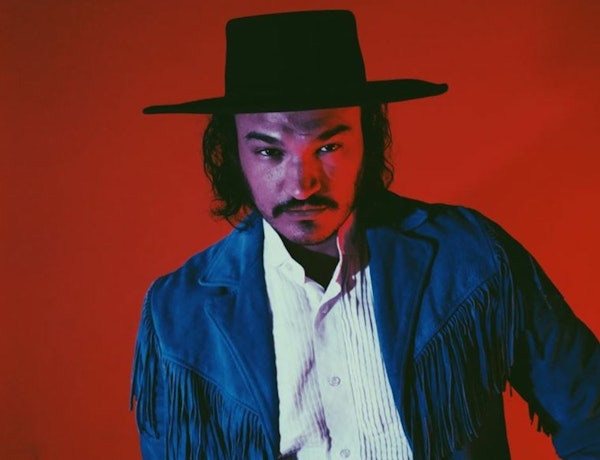
Night Beats

The Black Angels
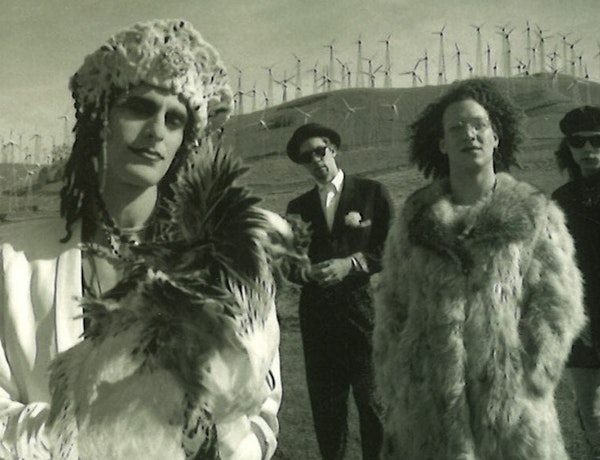
Jane's Addiction
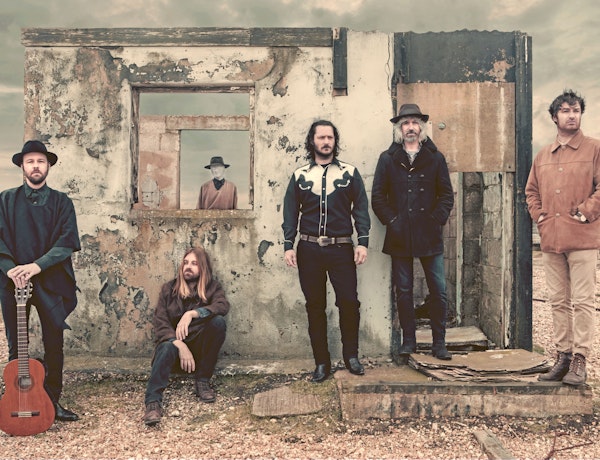
The Wytches

- International edition
- Australia edition
- Europe edition

Mysteries of the Rhubarb Triangle, revealed by Martin Parr
The documentary photographer turns his lens on the master rhubarb growers of West Yorkshire
I n long dark barns across a small patch of West Yorkshire, a great agricultural tradition continues. This is the rhubarb triangle , a nine-square-mile area between Wakefield, Morley and Rothwell. Here, from January to March, fuchsia-pink forced rhubarb, prized for its subtle flavour, is picked by hand, by candlelight , so that the delicate stems are not turned green and hard by photosynthesis.
Rhubarb is native to Siberia and likes the cold, the rain and soil rich in nitrogen. All are found in abundance in Yorkshire. Cuttings are taken from mature plants two years earlier, then allowed to mature in fields before they are brought inside for forcing. Because the stems must be removed from the root, the work is still done by hand, a highly labour-intensive process. The centrepiece of the forcing season is the Wakefield Food, Drink and Rhubarb Festival that runs from 19 to 21 February.
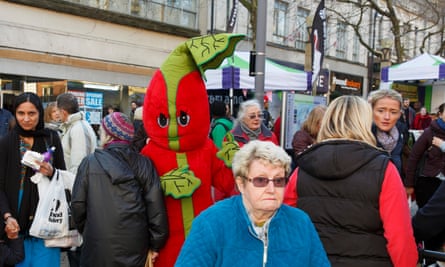
Forced rhubarb is now available from elsewhere – Holland, in particular – but this historic centre is still the plant’s spiritual home. The area used to be much bigger, stretching from Wakefield to Leeds and Bradford, and at one point produced 90% of the world’s forced rhubarb but fell into decline when rhubarb lost favour after the war. Although technically a vegetable, it is eaten as a fruit and was one of the few options available during rationing. As the British public was exposed to more exotic alternatives the business died off but has recently enjoyed a revival and gained protected status in 2010, putting it in the same category as Parma ham or feta cheese.
The harvest caught the interest of Martin Parr , one of our most celebrated documentary photographers, when he was approached by the Hepworth Wakefield art gallery two years ago to turn his expert lens on the harvest.

“I love rhubarb,” Parr says. “That whole world is very endearing, even down to the phrase ‘rhubarb triangle’. Most of the previous publicity focused on a single grower, Janet Oldroyd, who has done tremendous work inspiring the rhubarb revival.” Janet is known as the High Priestess of Rhubarb, and the family business stretches back five generations.
“But there are only 10 or 11 growers left in total,” Parr says, “and we approached them all [about taking part]. A couple said no but we photographed all of the others, several of whom had never been captured before. It is a fascinating subject and really helps connect the gallery with the local community.
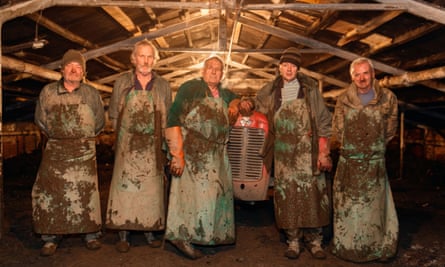
“The romantic story of the rhubarb is about how they pick it by candlelight. But what people forget is that the labour is completely back-breaking. One of the guys I spoke to used to be a miner, and he said that rhubarb was harder work than being down the mine.”
Parr says the gloomy environment also presented formal difficulties. “It was quite a technical challenge. Each of the barns has different levels of lighting, so we tried with just candlelight, flash, everything.” In the resulting images the growers peer out of the gloom, Parr’s signature ability to convey personality in full effect.

Yorkshire has been in the news this year thanks to the flooding which devastated parts of York and Leeds in December and January. But Parr says that rhubarb is being affected by a different climate problem.
“It grows best on hills, so most of the barns are safe from flooding,” he explains. “But one reason it grows so well in the triangle is because it’s a frost pocket. The tubers need cold temperatures to be activated, and when there is no frost they have to use chemicals instead. They expect the rhubarb to be more expensive this year because the winter has been so mild.”
Parr’s pictures go on display at the Hepworth next month. Rhubarb might be the title, but the pickers are the stars.
The Wakefield Food, Drink and Rhubarb Festival is on from 19 to 21 February
- The Observer
Comments (…)
Most viewed.
Our Plot at Green Lane Alloments Blog | Our Weather Blog | School Vegetable Patch Website | School Vegetable Patch Blog
© Our Plot on Green Lane Allotments - Please email me if you wish to use any of this site's content
The rhubarb triangle is officially the triangular area named due to its history of rhubarb growing. The location of the ‘triangle’ is sometimes described as the triangular area formed between the three cities of Leeds, Wakefield and Bradford, (the green triangle of the map), other sources of information give the points of the triangle as Leeds, Morley and Wakefield, (the blue triangle on the map). However, the largest area of rhubarb cultivation falls outside of both of these ‘triangles. The rhubarb triangle is more accurately the triangular area of land between Morley, Wakefield and Rothwell (the red triangle on the map). Much rhubarb is grown around the village of Carlton. In fact recently there had been some suggestion that Carlton change its name to Rhubarb!
Each year a Rhubarb Festival is held in Wakefield, the capital city of the rhubarb triangle, with people arriving from all over the country to attend. During the festival demonstrations of cookery with rhubarb and visits to local world famous forcing sheds are on offer. Although at one time when there were around two hundred rhubarb growers in the area, the secrets of successful rhubarb growing was a closely guarded secret and visitors would be kept well away from the forcing sheds.
The soil in the area and the amount of rainfall meant that the area was suitable for growing rhubarb successfully. Also being a mining area there was plentiful supplies of soot and ash which could be used as a soil conditioner and also a supply of cheap fuel with which to heat the forcing sheds. The area also boasted a large number of small market gardens. There were many textile mills in the West Yorkshire area and the waste from the mills mixed with horse manure made an ideal organic mulch. As the material decayed it released nitrogen to the roots of the plant.
For over 150 years rhubarb has been important to the area. Special rhubarb trains used to operate daily between Wakefield and London. The last of the ‘Rhubarb Express’ trains left Wakefield in 1966.
Originally rhubarb grew in Siberia where winters are cold and wet. Apparently it was originally grown in the Wakefield area as an ornamental garden plant. Even today plants from the same family, rheum, are grown as ornamental plants. In is also possible that original rhubarb was eaten for medicinal purposes as a laxative. In the 13th century rhubarb was four times more expensive than opium.
In the 19th century rhubarb was being grown by market gardeners in the Wakefield area as a fruit (even though technically it is a vegetable – a fruit is the part of the plant that holds the seeds whereas we eat the stem of the rhubarb plant), for use in jams and pies.
Legend has it that the art of forcing rhubarb was stumbled upon by accident when a chimney pot was accidentally left over a clump of rhubarb and the plant stems strained to grow and reach the light. On eating the stems they were found to be sweeter and more delicate than usual and so the art of growing rhubarb in the dark was born!
Around this time rhubarb began to be grown indoors in special forcing sheds. The name shed doesn’t really adequately convey the idea of these vast low roofed, windowless structures. Here rhubarb was grown in warm, dark conditions. Even now the rhubarb sheds are lit by candlelight and workers gather rhubarb in the gloom. When the rhubarb roots are taken into the warmth of the forcing sheds they are fooled into thinking that it is spring and this caused the buds to form quickly. In the quiet of the sheds it is said that the workers can actually hear the rhubarb growing.
[Rhubarb field and forcing sheds - taken from Live Search Maps ]
The darkness is essential to the production of the pale forced rhubarb much favoured by restaurants. The darkness means that all the plants energy is put into the growth of long pale stems rather than lush green leaves. This produces a sweeter crop.
Rhubarb plants are grown in the open for two years to build up energy within the plant. They are then taken into the forcing sheds where they are cropped for a year before they are thrown away as forcing severely weakens the plants.
About 90% of the world’s forced rhubarb was grown in the rhubarb triangle. At one time it was the only fresh fruit/vegetable available in the winter but after World War II more exotic fruits from overseas became available which caused a decline in its popularity. The two hundred growers have diminished to about twelve.
[Rhubarb production - taken from Live Search Maps ]
Nowadays the popularity of rhubarb is once again on the increase as people’s tastes change and sharp fruits are once more in ‘fashion’. This renaissance has maybe saved the rhubarb triangle from fading into extinction.
Rhubarb Tour
Click here for everything you have NEVER needed to know about rhubarb!
Click here to visit another rhubarb grower near to us
Fancy trying to grow your own forced rhubarb?

Home » Destinations » Nicoya Peninsula » Samara » 8 BEST Tours in Samara, Costa Rica
8 BEST Tours in Samara, Costa Rica
By Author Costa Rica Travel Life
Posted on Last updated: March 17, 2024
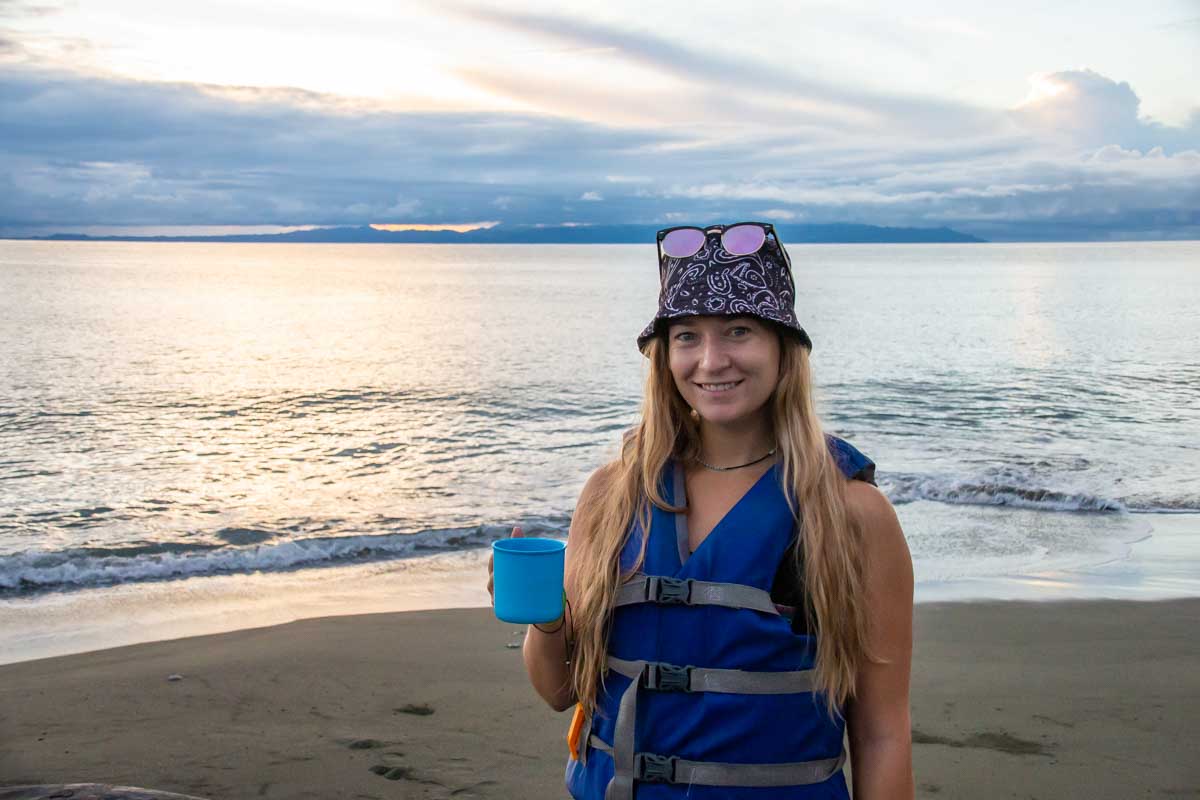
This blog may contain affiliate links. Read our disclosure policy for more info.
Samara is the perfect destination to experience the pura vida in Costa Rica. This laid-back beach town is ideal for a relaxed getaway with friends or family, and it feels like a super safe place to visit in Costa Rica .
We’ve found this small town is definitely less touristy than other parts of the Guanacaste province . Luckily, there’s still tons to do here, thanks to all of the amazing nature and wildlife around. You can swim with dolphins, go kayaking through mangroves, or ride horses along the beautiful beach – the choice is yours!
There are many fun activities in Samara , but we think that some are best done as part of a tour. Sometimes this is for safety and practical reasons, like if you’re heading out on a boat or ATV. Other times, it’s simply because your guide can take you to secret wildlife hotspots you would never find on your own.
So if you want to see the top highlights along with some hidden gems, we’ve got you covered! During our time in Costa Rica, we’ve tried many tours here and found the 8 best tours in Samara. Read on so you can start planning all of the amazing activities you want to experience here!
Our Top Picks for Tours in Samara
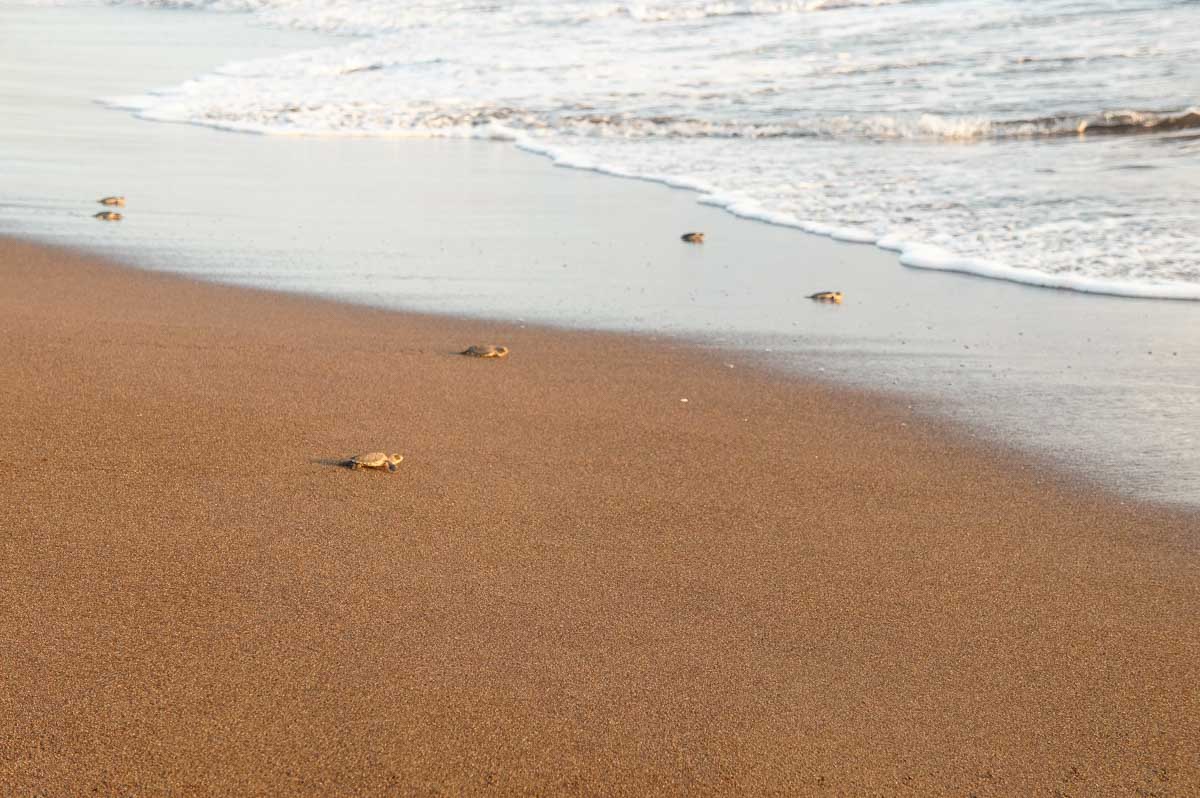
If you don’t have time to read through all the choices and just want to book now, these are our top choices for tours in Samara!
Best bucket list-worthy tour: When we arrived in Costa Rica, seeing turtles was something we really wanted to do. Luckily, Samara is a great place for this! On this 3.5-hour turtle watching tour , you’ll see turtles nesting or even baby turtles hatching on the beach! It’s an evening tour and the local guides choose which beach to go to depending on where the turtles are. It’s only $57 USD including transportation and can be booked online year-round , although September/October are prime months.
Best combo tour: Don’t just stay on land, get out on the water in Samara! This 3-hour tour takes you to the best places to see dolphins! You’ll watch them play in the waves and also have a chance to spot turtles, stingrays, and whales. Then, it’s off to a prime snorkeling spot at Isla Chora to get up close with some of the amazing marine life. It’s really a 2-in-1 experience and at $58 USD is really affordable to book online too.
Why book a tour in Samara?
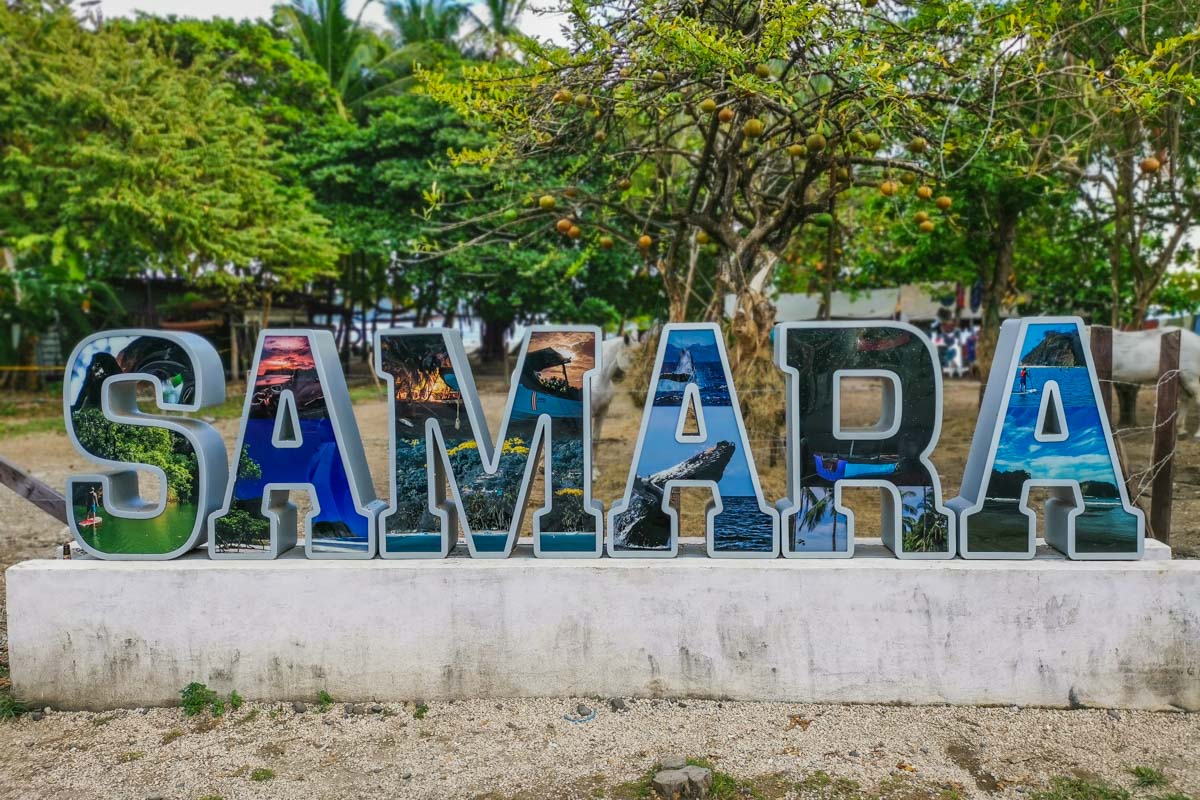
One of the best reasons to book a tour in Costa Rica – and more specifically, Samara – is that you get to see so much more wildlife that way. Some creatures are difficult to spot, but guides are so helpful for this. Plus, you find out so much more about what you’re seeing. In a country as biodiverse as Costa Rica, you come away from pretty much every tour having learned something fascinating.
Another reason to do a tour in Samara is that you can’t access all of the best activities here on foot, so having transportation taken care of is really nice. Some tourists rent scooters to get around, but understandably not everyone is comfortable with that.
We also found that the tours we did in Samara took us to places we wouldn’t have found on our own. For example, we discovered some amazing snorkel spots in Costa Rica that we wouldn’t have been able to get to otherwise.
Samara is pretty safe overall. But if it’s your first time in Costa Rica, you might feel more comfortable taking a tour. You’ll be with a local guide who ensures your safety throughout and makes sure you don’t venture off anywhere you shouldn’t.
Last but not least, we also found tours in Samara to be really good value for money! Most of the tours on this list cost less than $60 USD, so you really can’t go wrong.
What are the best tours in Samara, Costa Rica?
1. dolphin and snorkeling trip at isla chora national wildlife refuge.

One of the (many) amazing things about Costa Rica is that you can see dolphins all along its Pacific Coast. Samara is a fantastic place to go dolphin watching and it’s a really affordable activity here!
To access the best places for dolphin watching, I recommend taking this 3-hour tour . They pick you up around 8 am and head directly on a dolphin cruise. It’s such a beautiful way to start your morning and it’s hard not to smile when you see these playful creatures!
When we went, we loved watching the dolphins play in the waves, and we also saw turtles and stingrays. If you book this cruise between August and October, or December and April, you might spot some whales , too!
After the dolphin cruise, you’ll sail to Isla Chora , which is famed for its amazing snorkeling. We went snorkeling here and saw lots of marine life, including a turtle, pufferfish, and lots of pretty reef fish.
At $58 USD, we think that this tour is amazing value. You essentially get two tours in one! It’s also a great tour to do if you don’t have a lot of time in Samara but still want to experience its fantastic marine life. Snacks, snorkel equipment, and all transport are all included. There’s a maximum of 20 travelers, so it’s not too crowded, either!
If dolphin watching is at the top of your agenda, you’ll want to take this tour! You can pick your date and book it right here .
Related Read: If you love surfing, read all about the nearby town of Santa Teresa ! It provides that laid-back surfer lifestyle with cheap rentals and good waves year-round.
2. Horseback Riding on the Beach

Horseback riding is a super popular thing to do in Samara. Riding along the beach is just the perfect setting whether you’re honeymooning in Costa Rica or just looking for a unique activity.
We recommend this 2.5-hour horseback tour as the guides are great at encouraging you and showing you what to do if you’re a beginner. Rest assured, you don’t need any horse riding experience to enjoy this tour!
You’ll ride through the jungle in a small group of no more than eight and your guide will point out lots of flora and fauna along the way. You’ll almost certainly see monkeys scampering around! Your trusty steed will take you up a mountain to an amazing viewpoint where you can soak in the beauty of Samara’s wild landscape.
Then, you ride to a gorgeous beach where you can gallop along the shore and end your tour on a high. Riding horses along a stunning, deserted beach is something you only see in movies, and this is a rare opportunity to actually experience it in real life.
This tour is offered Mondays through Saturdays at 8 am and 3 pm. If you do the tour later in the afternoon, you will ride along the beach at sunset, which is such an amazing experience – we recommend doing this if you can!
The experience costs $55 USD per person, and there’s a minimum of two people per booking. The price includes hotel pickup and dropoff, and some photos and videos of the experience. It’s a fantastic price, but we’ve actually seen this tour offered for even cheaper. So, don’t hesitate to check prices for your dates online here !
3. Turtle Nesting Tour

If you’re anything like us, seeing turtles in Costa Rica is high on your list of things to do in the country . But on this 3.5-hour tour , you not only see turtles, you get to watch them nesting and hatching on the beach!
This really is the kind of experience that’s best done with a guide. They’ll know all of the hotspots for turtle activity and can teach you all about their life cycles. Plus, you may even see baby turtles crawling towards the sea like we did!
This tour will pick you up around 7 pm and take you to Corozalito or Camaronal Beach , depending on the conditions that day. However, if there’s an arribada happening in Ostional Beach (which is 1.5 hours from Samara), your tour will take you there for no extra cost. An arribada is a natural phenomenon when hundreds of turtles come ashore at once to lay their eggs. It’s an incredible, once-in-a-lifetime thing to see and a big pro of this tour as far as we’re concerned!
This turtle tour costs $57 USD per person, including your roundtrip transport and guide, as well as water, juice, and snacks along the way. The very best months to book are September and October, as this is prime turtle time in Samara. However, you can do it year-round, so don’t worry too much if you’re not here during these specific months.
If you’re an animal lover, you won’t want to miss this awesome opportunity! I recommend booking well in advance to secure your dates .
Related Read: Samara is just one of the many epic places in the area – so check out our complete guide on the Nicoya Peninsula (including the best things to do) .
4. Mangrove Kayaking Tour

Costa Rica isn’t all beaches and rainforests! Mangroves are a super interesting ecosystem, and they just so happen to be really fun to kayak through.
This guided tour takes you down the Ora River, where you’ll kayak through the mangroves. To get an idea of what this looks like, just check out my photo above! Believe me, you’ll feel like an intrepid explorer as you spot monkeys, iguanas, and beautiful birds as you go.
You’ll also learn a lot about mangroves from your guide. Did you know that they’re basically environmental heroes and absorb 5-6 times as much CO2 as rainforests? We definitely didn’t before taking this tour!
Plus, kayaking along the Ora River is easy, thanks to the calm water. You don’t need to be a paddling pro with super strength to enjoy this tour. As such, it makes for a great family-friendly activity as well.
The kayaking tour costs $66 USD per adult and $47 USD per child (ages 4-10). It lasts for around 3 hours, and there’s a refreshment and fruit break midway through at a beach (where you might even spot turtles nesting if you’re lucky!). The tour covers all your kayaking equipment, including lifevests and roundtrip transportation from your Samara accommodation .
This is such a relaxing, gorgeous day outdoors that you can book directly through Viator .
5. Ocean Kayak and Snorkeling to Chora Island

We absolutely loved this kayaking tour to Chora Island ! We kayaked from Samara to Chora Island , which took about 30 minutes and was actually quite challenging. This was partly because the sea was choppy in sections but also because the sun was so hot. But honestly, it was all part of the adventure – and arriving at this stunning, secluded beach was a reward in itself!
Once we made it to Chora Island, we got to relax on the beach and cool off in the water. Chora Island is a pristine place, and you’ll probably have the whole beach to yourselves! Honestly, we were so happy to go ashore on this tour.
The snorkeling was the best part for us, though. The water was super clear, and we got to see turtles, puffer fish, and lots of other tropical fish. Plus, our guide was really helpful and knew tons about the marine life around the island.
This is a fantastic tour for nature lovers and wildlife enthusiasts, and we highly recommend it. It costs $48 USD including all equipment, hotel pickup and drop off, as well as some snacks on the beach. It’s a great way to make the most of your time in Samara, and we would definitely do it again!
To experience this adventure for yourself, book this kayaking and snorkeling tour here !
Related Read: Do you enjoy seeing marine life up close? Then check out the best places to go scuba diving in Costa Rica .
6. Sunset and Wildlife ATV Tour

Samara has gorgeous coastal and mountain scenery, and you can explore it on this Sunset Quad Ride . Not only do you get to enjoy lots of natural beauty, but you also get a thrilling ATV experience!
You start in the mid-afternoon, and you quite literally get off the beaten track by exploring backroads and dirt trails. When we went, we saw a wild side of Samara that most people don’t experience. As you drive through the trees, keep an eye out for wildlife before reaching a breathtaking mountaintop viewpoint.
You’ll also drive to Barrigona Beach , which is one of the best beaches in Samara. It’s about 10 kilometers (6 miles) out of town, and you need an ATV or a 4WD to get down there. For this reason, it’s always super quiet, and the chances are you’ll be the only people there! This is one of the many reasons we love this tour !
You’ll have time to swim here if you want to, although there is a large swell, so you might just prefer to chill on the white sand instead. The tour ends with a visit to a quiet sunset spot where you’ll have epic views of the vivid sunset over the ocean. Talk about ending on a high!
You’ll need to present your passport and a valid driver’s license to participate in this tour (since you actually drive on the roads). It runs year-round, including during the rainy season. However, we actually love ATV rides at this time of year because, believe it or not, the mud makes it even more fun. Regardless of when you visit Costa Rica , this tour delivers!
Kids as young as 5 can participate, and there are double and single ATVs available. A single ATV costs $124 USD per person, while a double costs $162 USD. Book this ATV adventure to experience it all … jungles, mountains, beaches, and an unforgettable sunset.
7. Safari and Buenavista Beach Horse Riding Tour

This horseback safari is an incredible way to explore the natural beauty of the Guanacaste province . You start with a boat ride, during which your captain will give you an introduction to the area’s unique flora and fauna.
Once you arrive at the trailhead, you’ll meet your horse and guide and head off to explore the jungle. You’ll see monkeys, birds, reptiles, and maybe even some crocodiles – but don’t worry, it’s from a safe distance on horseback!
There are also several river crossings along the way, which are fun to navigate. Then, you end up on Buenavista Beach . You get to ride along the beach and paddle in the waves, which really is an amazing, bucket list-worthy experience (unless you’re allergic to horses like Bailey!).
You head back to the meeting point via an easy ride through some fields, which are home to wild horses and cows. The whole thing lasts about 2.5 hours which feels like the perfect amount to traverse this terrain on horseback.
Overall, this tour is a lot of fun, and the trails are nice and easy. It really doesn’t matter if you’ve never ridden before! The guides are also really friendly and will even fetch you fresh coconuts from the trees if you get thirsty.
The experience costs $59 USD, and kids as young as 5 can participate (as long as they’re accompanied by an adult). There’s a maximum of 5 travelers per group, so it’s a really nice, small group. Hotel pickup and drop off aren’t included for this tour, but the meeting point is easy to get to via a scooter or local taxi.
Those who love riding horses (or want an easy introduction!) won’t want to miss this tour. Check availability and reserve your dates online here !
8. Werner Sauter Biological Reserve Hike
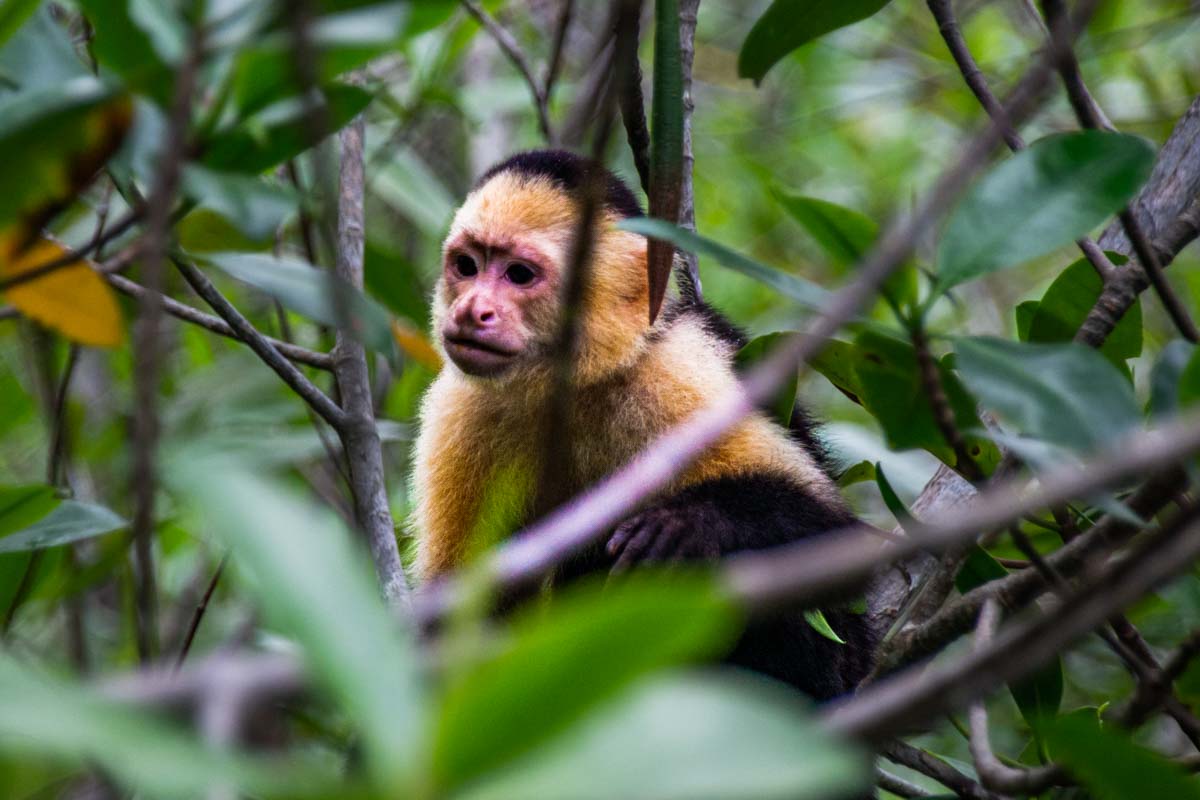
The Werner Sauter Biological Reserve is one of the best places to see wildlife in Samara. It’s a private reserve with gorgeous mountain trails that give you epic views over the town’s beautiful beaches.
This small group tour will pick you up from town and take you to the park, where you’ll begin a 2.5-hour guided hike through the reserve. The hiking is fairly easy and as you go, your guide will teach you all about the tropical dry forest and why it’s such an important ecosystem for Costa Rica’s wildlife .
On our visit, we discovered why this type of forest is so threatened, and we gained an even deeper appreciation for its beauty. We also saw loads of incredible native animals, including parrots, monkeys, butterflies, deer, and iguanas.
On this guided tour , you’ll also pass through an organic mango plantation. If you’re hungry, you can help yourself to the fresh mangoes. I mean, talk about a rewarding hike!
There are two options for the hike – a morning tour at 6:30 am for $47 USD and an afternoon tour at 2:30 pm for $42 USD. For both options, there’s a maximum of 10 people per group. We love that it’s a nice, small tour because you get more personalized attention and can ask questions about what you’re seeing. To secure your preferred time and date, we recommend booking this tour in advance .
Related Read: Do you love to travel but want to limit your environmental impact? Read about the best ecolodges in Costa Rica (with options for all budgets!).
Where to Stay in Sámara, Costa Rica
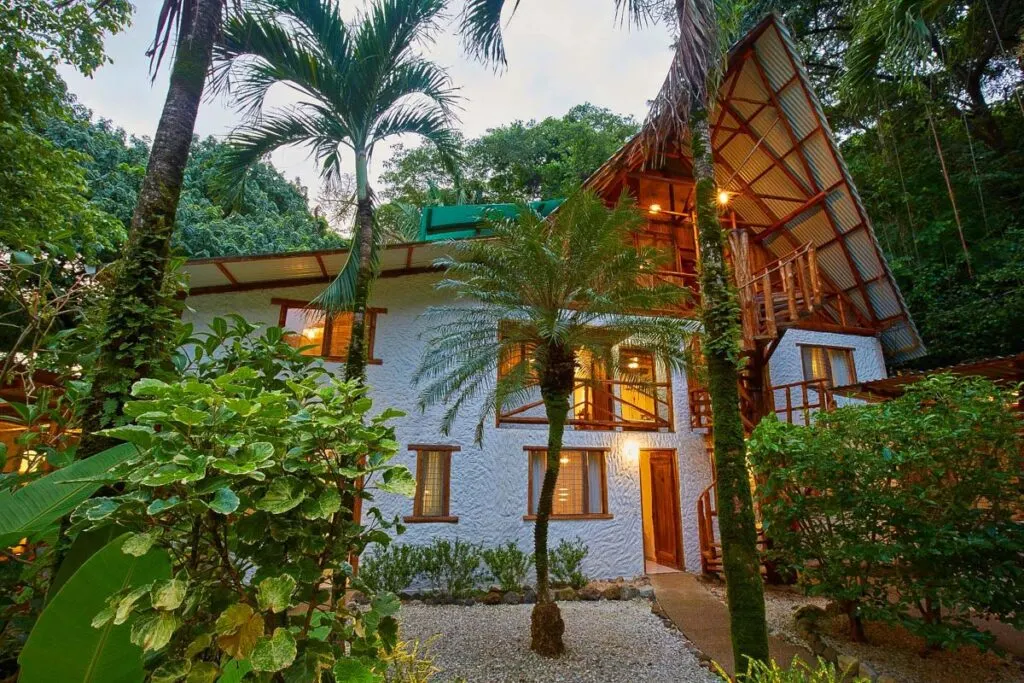
Sámara is one of those towns with a huge variety of places to stay. From budget backpacker hostels to luxury hotels, there are great accommodations in Sámara for all budgets. To help you narrow it down, we’ve included our favorites below.
Leyenda Boutique Hotel & Spa – $$$
For luxury travelers or families, I love Leyenda Boutique Hotel & Spa . This place is spectacular and offers a fitness center, swimming pool, spa, and restaurant. On top of that, it’s located right just over a mile from the beach. From standard double rooms, to family suites to suites with a whirlpool there is an option for couples and groups alike.
Guests seem to love the property’s landscapes and service the most! Prices start at $247 USD which is amazing for a high-end option – so check prices and reserve a luxury room or suite here !
Mid-range – $$
Hotel entre dos aguas – $$.
If you consider yourself a mid-range traveler, then I have a great choice for you that caters to couples. Hotel Entre Dos Aguas is a rustic hotel with simple amenities on a beautiful property. Perfect for those who want a true Costa Rican stay.
All of the rooms have private showers, and some of the rooms have a terrace. You can check availability and book online here on Booking.com .
Las Mariposas – $
If you’re on a budget, there are lots of options, but not many of them are good. Las Mariposas is my top choice, with its location close to the beach. The hostel has a great atmosphere for meeting other travelers and is suited to the social backpacker. They offer a shared kitchen and common spaces, hammocks to relax on the patio, billiards, and karaoke.
A bed in a shared dorm runs about $12 USD, while private rooms start at $30 USD. You can book this place on Hostelworld or Booking.com .
For more info, read our detailed guide about deciding where to stay in Samara with the best hotels and areas !
Getting Around Costa Rica
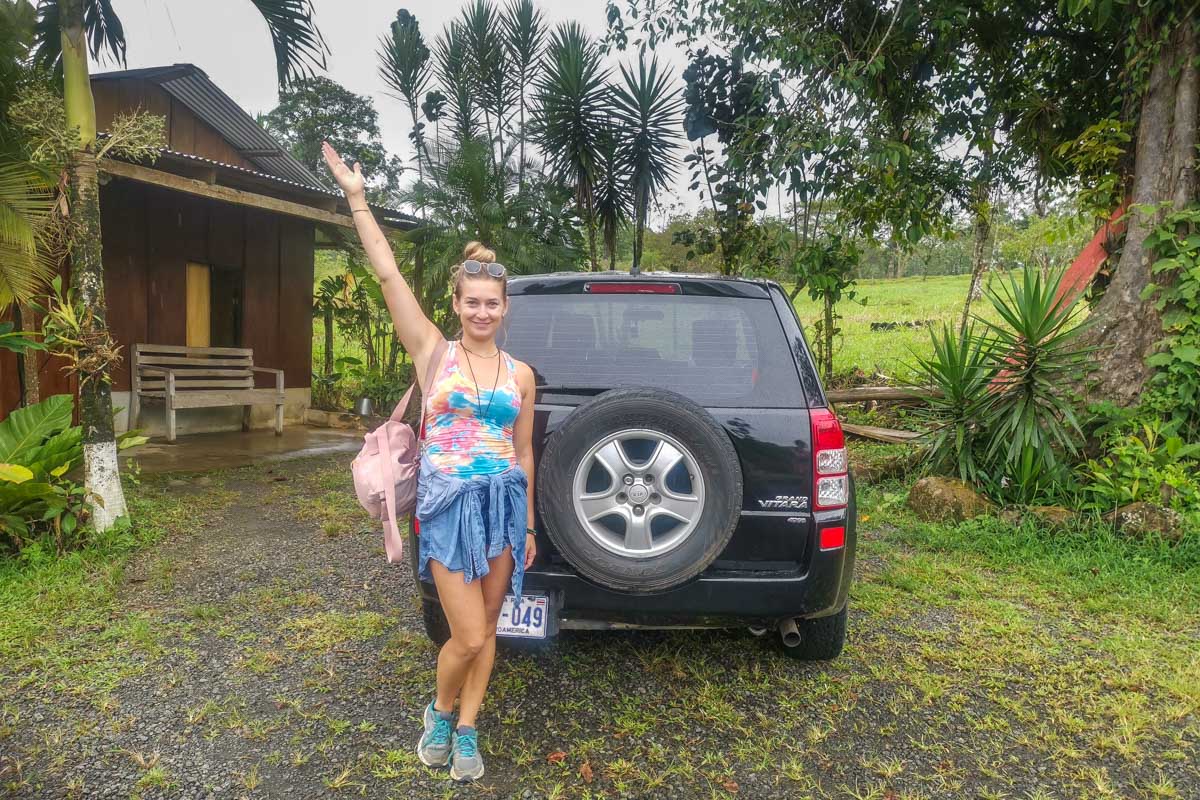
How you choose to get around Costa Rica is one of the biggest decisions you’ll make when planning your holiday here! How you do it depends on your budget, travel style, and comfort level.
Renting a Car
Without a doubt, the number one way to explore Costa Rica is in a rental car. We book rental cars on the Discover Cars website as we have had good experiences with them in the past.
One of the things you need to watch for when renting a car in Costa Rica is the mandatory insurance that the government requires you to have. There are a lot of very cheap rentals that don’t include this mandatory insurance (TPL) in the original booking price, but there are also ones that do. To avoid additional surprise charges when you pick up your rental car, be sure to rent a car that includes the mandatory insurance when you book.
Thankfully, on Discover Cars it’s easy to tell apart the companies that include the mandatory insurance and those that don’t. The trick is you can’t pick any car on their website. In the picture below, you can see this rental car, with pick up in Jaco, includes the TPL. That means the mandatory insurance is included in the price. Any cover you get above that is extra.
Of course, I still suggest getting the full coverage offered by Discover Cars, which covers you even more.
You can browse cars on Discover Cars here .

Book Shuttles
If renting a car isn’t in your budget, you don’t feel comfortable driving in Costa Rica , or you just don’t like driving, shuttles are the next best option. There are hundreds of shuttle routes available all over the country, and they are very affordable.
Shuttles in Costa Rica are specifically for tourists and often include pick up and drop off at your selected hotels and airports. The drivers also speak some English, and the vehicles have air conditioning. You’ll also be guaranteed a seat when you book a shuttle (which isn’t the case with the public bus system.)
To get the best price, use the website Bookaway . They compare all the offers and prices of shuttle companies in Costa Rica so you get the best price! Honestly, we have saved so much money using Bookaway!
You can search for shuttles online on Bookaway here.
Lastly, you can use the public bus system. On short journeys, such as from San Jose to La Fortuna or Uvita to Manuel Antonio, this system is great. However, the longer the journey the more hassle and time spent on a bus. It’s undoubtedly best to save the public bus in Costa Rica for short and straightforward trips!
The public buses are definitely the cheapest way to get around Costa Rica, but they are not always very reliable and schedules often change without notice and delays are to be expected. The buses can also be very crowded and hot – so just be prepared!
It’s also good to speak some Spanish if you plan on riding the public bus since most drivers and ticket booth operators don’t speak English.

Samara is the perfect beach town to relax and bask in gorgeous natural scenery. This place is more off-the-beaten-path than other tourist destinations, which is why we recommend tours here! Whether you choose to ride horses, drive ATVs, or kayak through mangroves, you’ll have an incredible time.
If you found this article helpful, read our other blogs about Costa Rica . We’ve traveled all over this country, and we even lived here for a while. We love sharing what we’ve learned so you can have an amazing trip as well.
Where to stay in Nosara: BEST Nosara Hotels, Holiday Homes & Areas
Things You NEED To Know About Shuttles in Costa Rica
BEST Treehouse Hotels in Costa Rica (for all budgets!)
Book your Ocean Seafari today, and get 10% OFF
any additional adventures 🔥 ( limited time only )

+506 2656-0920
+506 8952-1000

ADD ROUNDTRIP
From nosara or punta islita.
OCEAN SEAFARI
& NATURE HIKE
The day starts at 8 am with a Dolphin and snorkel tour, followed by a delicious lunch at 12, after you can rest and chill! Then you can get ready for a nature hike at Samara Trails!

SAMARA TRAILS
& ISLAND KAYAK
The order of the activity depends on the tide. Includes a hike at a Private Biological Reserve, followed by lunch at a beachfront restaurant. Then you can explore the ocean on a kayak trip to Isla Chora.

& STAND UP PADDLE
The order of the activity depends on the tide. Includes a hike at a Private Biological Reserve, followed by lunch at a beachfront restaurant. Then you can explore the ocean on a SUP trip to Isla Chora.


IMAGES
COMMENTS
Oldroyd's Yorkshire Forced Rhubarb Triangle Experience. Tours will hopefully commence January 2025, bookings taken in November 2024 for season 2025. About your visit: Although the whole visit takes place indoors, this is a working farm, and warm outdoor clothing and sturdy foot-ware are recommended.
A 9 square mile area of West Yorkshire has now become known as The Rhubarb Triangle - the three corners of the triangle roughly equate to Leeds, Bradford and Wakefield. Here rhubarb is grown in special sheds in a process known as "Forcing". The process of forcing of rhubarb was discovered in Chelsea in 1817, when some roots were covered ...
Wakefield Rhubarb Festival. Each year, since 2007, the Rhubarb Festival is held in Wakefield, the 'capital city of the rhubarb triangle', which attracts visitors from around the country. The festival celebrates the industry and hosts cooking demonstrations and tours to the famous forcing sheds. For more details visit Rhubarb Festival on ...
Discover Rhubarb Triangle in Rothwell, England: A stretch of land where the sour-sweet vegetable is cloaked in darkness and grows so fast you can hear it crack, squeak, and pop. Trips Take your ...
The Rhubarb Triangle is a 9-square-mile (23 km 2) area of West Yorkshire, England between Wakefield, Morley, ... A Farmers' Market, cookery demonstrations, walks and tours of the forcing sheds are among the attractions. In 2005 Wakefield council erected a sculpture depicting a rhubarb plant in Holmfield Park Wakefield. Rhubarb ...
Janet, Neil, and sons Lindsay and James farm 200 acres of rhubarb at E Oldroyd and Sons Ltd at Rothwell, in the middle of the world-famous rhubarb triangle between Bradford, Leeds and Wakefield ...
YORKSHIRE RHUBARB TRIANGLE WEEKEND. 2022 - 2023 Autumn Winter & Spring / England, North / Mercure Leeds Parkway Hotel. GUIDED TOUR OF A YORKSHIRE RHUBARB FARM. FREE TIME TO EXPLORE THE CITY OF LEEDS. To view the full itinerary for this tour, please log-in. If you don't have an account with us already, please contact us to register.
Rhubarb growing has become a tourist attraction, as is the Rhubarb Triangle. It is, at the right time of year, possible to take a guided tour around the forcing sheds on Janet's farm. Visitors describe the experience as being "cathartic and calming", "like being in a flotation chamber", and, "amazing… if you're quiet, you can ...
A 9 square mile area of West Yorkshire has now become known as The Rhubarb Triangle - the three corners of the triangle roughly equate to Leeds, Bradford and Wakefield. Here rhubarb is grown in special sheds in a process known as "Forcing". The process of forcing of rhubarb was discovered in Chelsea in 1817, when some roots were covered ...
yorkshire rhubarb triangle weekend spring 2023 - 2024 Autumn Winter Spring / England, North / Best Western Plus Craiglands
The rhubarb triangle consists of a geographical area spanning Bradford, Leeds and Wakefield in the county of West Yorkshire, England. The term 'Yorkshire Forced Rhubarb' was given Protected Designation Origin status by the European Commission in 2010. ... I'm not alone in this feeling. 'On the tours, people don't want to wake it up ...
Wakefield's Rhubarb Festival is set to return in February. The Rhubarb Triangle Farm in Wakefield is at the heart of the Rhubarb Triangle and continues to grow and harvest hundreds of rhubarb each year. The Dobson family, owners of the farm, have been farming since 1815 and have served the local community with vegetables for over five generations.
Deep inside Yorkshire's rhubarb triangle. All Stalk: With British rhubarb enjoying a revival, Joan Ransley tours the Yorkshire sheds at the heart of the industry and captures the twilight world ...
Originating from various corners of the North of England, the group came together in the area known as The Rhubarb Triangle to play experimental acid. more... Follow The Rhubarb Triangle on Ents24 to receive updates on any new tour dates the moment they are announced... Follow. Be the first to know about new tour dates.
This is the rhubarb triangle, a nine-square-mile area between Wakefield, Morley and Rothwell. Here, from January to March, fuchsia-pink forced rhubarb, prized for its subtle flavour, is picked by ...
The rhubarb triangle is more accurately the triangular area of land between Morley, Wakefield and Rothwell (the red triangle on the map). Much rhubarb is grown around the village of Carlton. In fact recently there had been some suggestion that Carlton change its name to Rhubarb! Each year a Rhubarb Festival is held in Wakefield, the capital ...
Originating from various corners of the North of England, the group came together in the area known as The Rhubarb Triangle... highly influenced by psychedelia, freakbeat and R&B, with an original ...
Rhubarb lovers rejoice! Wakefield's celebration of its most famous vegetable returns to paint the city pink. The Rhubarb Festival is one of the food and drink festivals in the national calendar. As always, it promises to start things off with a bang! So come along to part of the famous Rhubarb Triangle and have a taste of all things Rhubarb.
Welcome to Samara, Costa Rica - A Brief Overview. Samara, a coastal town located in the Guanacaste Province of Costa Rica, is renowned for its laid-back vibe and stunning natural beauty. With its pristine sandy beaches framed by lush tropical greenery and the crystal-clear waters of the Pacific Ocean, Samara provides a picture-perfect setting ...
Experience the best of Sámara & Carrillo Beach with Samara Explorers. Discover the hidden gems of this tropical paradise through our exhilarating day tours, ATV adventures and many more activities. Immerse yourself in the breathtaking beauty of the area, including Arenal Volcano, Rincon de la Vieja Volcano, Ponderosa, and more, as our ...
5. Ocean Kayak and Snorkeling to Chora Island. Kayaking at Isla Chora in Samara, Costa Rica. We absolutely loved this kayaking tour to Chora Island! We kayaked from Samara to Chora Island, which took about 30 minutes and was actually quite challenging.
The day starts at 8 am with a Dolphin and snorkel tour, followed by a delicious lunch at 12, after you can rest and chill! Then you can get ready for a nature hike at Samara Trails! FROM $125. BOOK NOW. SAMARA TRAILS & ISLAND KAYAK. The order of the activity depends on the tide. Includes a hike at a Private Biological Reserve, followed by lunch ...